


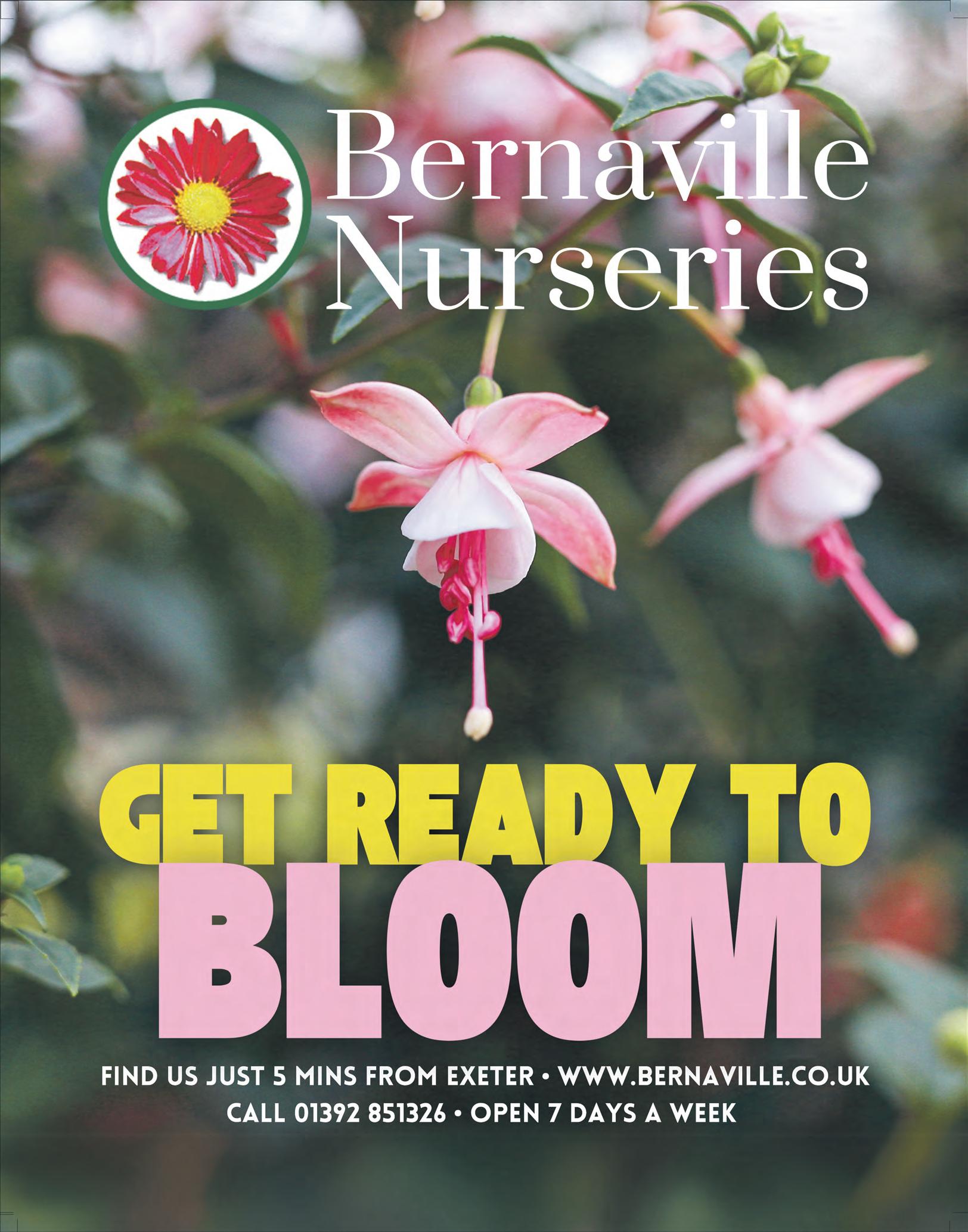






Two new openings for the National Garden Scheme in Devon during successive weekends in July are in contrasting parts of the county - Willow Glade Farm at Ashwater near Beaworthy, and Larcombe Farmhouse at Diptford near Totnes.
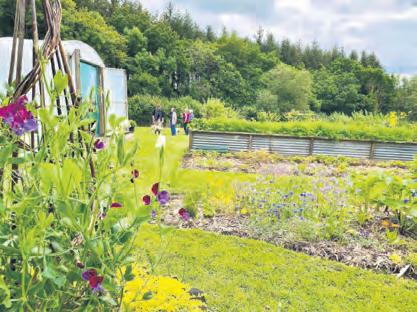
Willow Glade Farm, Ashwater, Beaworthy, Devon EX21 5DL is opening on Saturday 12th and Sunday 13th July from 11am until 4pm each day, has been in development since 2020, and is divided into two main areas, with a vegetable plot using traditional gardening methods with elements of permaculture and no dig, then a path through a more naturalised garden with a small woodland walk, pond area, apple orchard and wildflower meadow.
Admission £5, children free, with teas available, plants for sale and dogs allowed on short leads. Larcombe Farmhouse at Diptford, Totnes, Devon TQ9 7PD is opening for the NGS on Saturday 19th and Sunday 20th July from 11am until 4pm each day, a beautiful south facing cottage garden in the rural hamlet of Larcombe with an abundance of traditional cottage florals, roses and hydrangea in an undulating garden of about an acre with a stream running through it, and peaceful seating areas. Teas available, dogs on short leads allowed. Pre-booking is essential but walkers and cyclists are welcome without the need to pre-book. Admission £6, children free.
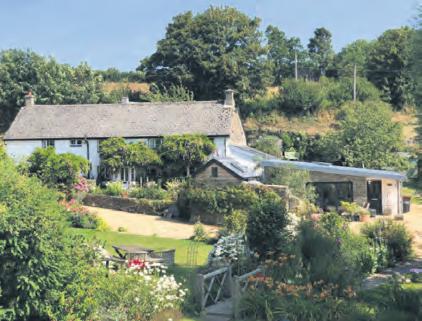
For more gardens opening for charity go to page 26
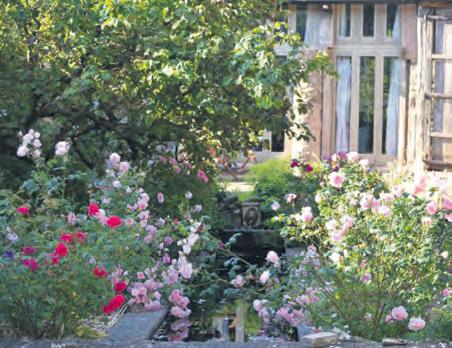
The Linhay, Stockleigh English, Crediton EX17 4DD opens for Hospiscare on Sunday 27th July from 2pm until 5pm, a one-acre plot with beautiful views towards Raddon Top. There’s a gravelled walled garden, perennial and shrub beds, rockery, pergola walkway, young trees and various seating areas. A gravelled courtyard is to the rear, a cutting garden with mature trees and a paddock which is left uncut. Admission is by donation at entry. Parking is available on a paddock by the gardens. Tea, coffee and cakes available and plants for sale. No access for wheelchairs to rear courtyard, level access to all other areas, but all either gravel or grass. Dogs welcome on leads.
For more information, please contact: dee@thelinhay.net
www.hospiscare.org.uk
Then came July like three o’clock in the afternoon garden, hot and listless and miserable ALLIE RAE
A homeless charity in Devon has been donated a garden featured in this year’s Chelsea Flower Show.
Shekinah was selected to have the Pathway Garden once the show had finished on 24th May and a team has begun to install it in Plymouth. The garden was inspired by the work of homelessness charity Pathway and was selected for two awards at this year’s show.
Built by Modular Garden Limited, the company said it was sustainably designed with the help of people who had experience of homelessness.
The garden won the silver medal and the Environmental Innovation Award at the show.
The garden will form part of a permanent community space at Shekinah in Plymouth thanks to a grant from Project Giving Back, which supports charitable causes through gardens.
New research in Devon has found a record number of homeowners want to ‘improve, not move ‘with investment in gardens now a top priority.
One in five homeowners said they would like to move as affordability pressures reshape the home and garden market this year.
Landscaping gardens, creating outdoor eating and patio areas and investing in vegetable gardening come out on top of plans for those forced to stay. Thousands are putting plans to move on hold and are instead investing in their current homes - a promising sign for the home improvement industry.
Over half of people intending to make home improvements over the next 12 months, with the most popular plans including gardening, installing a new bathroom, creating an outdoor dining, and entertaining area and installing a new kitchen.
Unhooked Communications for the Homes Unhooked 2025-2026 report, found that the motivations behind investments are evolving. Practical concerns like making better use of existing space increased in homes is a key factor.
Grants to support the establishment of thousands of trees, orchards and hedgerows on streets, in parks, and in community and educational spaces, are now available through The Tree Council – including the introduction of a new £1m grant pot, funded by Defra.
The Tree Council, the national charity working together for the love of trees, offers a range of funding and free tree options to support planting projects; helping to bring greater biodiversity, improved air quality, reduced risk of flooding, and deliver significant environmental enhancement to grant recipients and their communities.
And now, a new fund is available is available for organisations throughout Somerset , offering grants of up to £40,000 for local authorities and charities to grow trees on land that is publicly accessible, or of benefit to the public.
Successful applicants must use biosecure stock and all projects must be completed by March 2026.
Successful applicants must show clear community benefit and involvement, and the planting must take place on publicly accessible land.
www.tracking.treecouncil.org.uk
Deep summer is when laziness finds respectability SAM KEEN
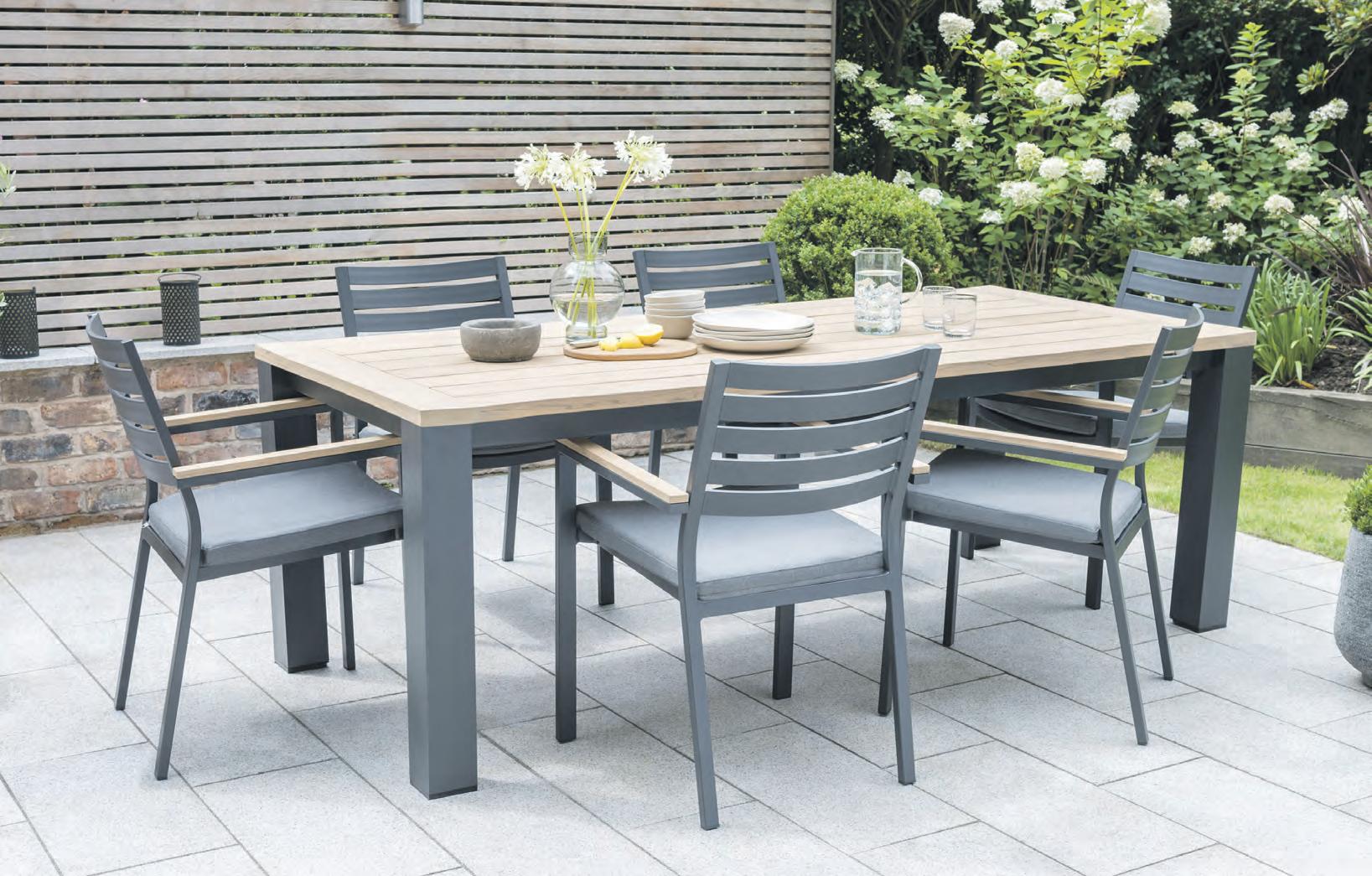
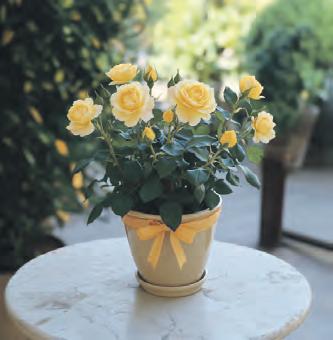
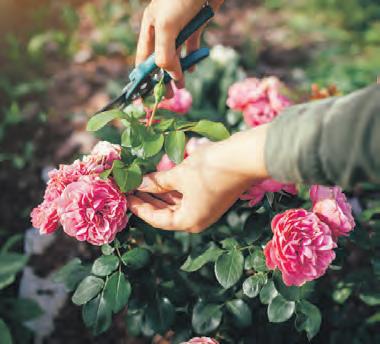
Step into the serenity of outdoor living this summer with our extensive range of garden furniture—where timeless style meets soothing comfort and lasting strength. Whether you dream of graceful dining beneath the sky or quiet moments on a sun-drenched lounger, we have the perfect pieces to turn your garden into a haven of relaxation.
Visit our Rose Festival, - a celebration of Britain’s beloved blooms, radiant in full flower this month at all our garden centres. We have a rose that will blossom beautifully in any garden setting bringing you an abundance of joy.

& JULY
At your local Otter Garden Centre
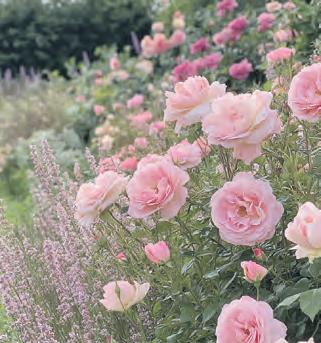
Your local Otter Garden Centres:
OTTERY ST MARY Gosford Road, Ottery St Mary, EX11 1LZ
PLYMOUTH Chittleburn Hill, Brixton, Plymouth, PL8 2BH
JACK’S PATCH Newton Road, Bishopsteignton, Teignmouth, TQ14 9PN
TORBAY Moles Lane, Paignton, TQ3 1SY
Also find us at TAUNTON, WINCANTON & LYMINGTON
www.ottergardencentres.com
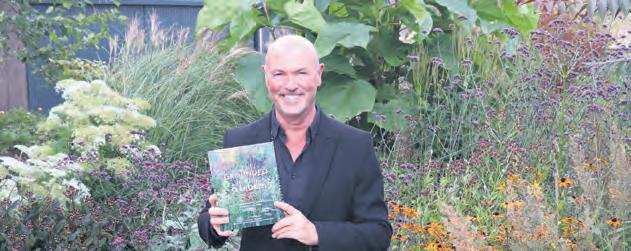
Internationally reknowned gardener TJ Maher of Patthana Garden in County Wicklow, Ireland is visiting the west countryin October to give talks on his exceptional garden. TJ, a painter and plantsman, will explore his book Grounded in the Garden – an artist’s guide to creating a beautiful garden in harmony with nature with a series of stunning photographs.
Patthana Garden is managed organically and comprises of many areas including a new and exciting “Torc” garden with its tapestry of hardy perennials and grasses. The evening talks will take place in Plymouth on Friday 24th October and Long Ashton, Bristol on Saturday 25th October. Tickets are available on eventbrite (Search TJ in Bristol or Plymouth).
All profits from the Plymouth event will be going to the Wildside Garden Tribute Fund in aid of their on-going project to open a Cancer Respite Pavilion.
www.eventbrite.co.uk
Ten Devon schools including Kenn C of E Primary School and Kenton Primary School in Exeter, All Saints Primary School in Axminster, and Upottery Primary School in Honiton, have benefitted from a free fruit tree planting programme offered across Devon, Dorset and south west Somerset by environmental education company Little Green Change.
Schools were able to choose up to four apple, pear, plum and/or cherry trees each for their grounds. Children from all schools helped to plant the trees and learnt about the many benefits of these to pollinators like bees, other wildlife like birds, and to human health through the fruit the trees produce and improved air quality.
Little Green Change will be delivering their free autumn bulb planting activities in September and October 2025. State-funded schools that are interested in taking part should contact Little Green Change at info@littlegreenchange.com
There is still plenty of time for visitors to RHS Rosemoor to enjoy the largest collection of roses in the southwest, comprising more than 200 different varieties and over 2,000 specimens at the popular north Devon gardens.
Mild spring weather, with intervals of rain followed by plenty of sunshine, have brought ideal growing conditions for these popular but prickly plants. This year’s Festival of Roses, runs until Sunday 13 July, is a chance to explore the collection at the height of its early summer beauty, although there are plenty of blooms to admire already. From shrub roses of historical significance to the most modern rose introductions, ground cover roses to climbers, the breadth of variety in shape, colour and fragrance really is something to experience.
Roses have always been at the heart of the horticultural gardens – the clue is in the name! When the gates opened on 1st June 1990, roses formed the first ornamental plantings in two dedicated gardens, outlined by more than 1,200 hedging yews which, back then, were dwarfed by the roses.
Visitors can join a weekly rose tour every Tuesday at 12 noon throughout the festival to learn more about these beautiful blooms, or, enjoy a general garden tour starting at 11am every day (places allocated on a first-come-first-served basis).
RHS Rosemoor,Torrington EX38 8PH


Saul Walker trustee of the Hardy Plant Society and member of the RHS Tender Pants Committee, will be offering advice on Thursday 10th July at 7.30pm at the Garden House, Buckland Monachorum on how to bring jungle style plants into our gardens, using a combination of hardy, yet exotic-looking plants along with tender perennials, adding that tropical pizazz! He will also explain how to grow, propagate, and overwinter more tender plants. Ticket price: £15.
The Garden House, Buckland Monachorum, Yelverton, Devon PL20 7LQ
Bicton Park Botanic gardens in East Budleigh are holding a special day celebrating the beauty and diversity of cacti, succulents, and orchids at Bicton Park on Friday, 26th July.
Visitors will be able to explore a showcase of rare and unusual plants, with expert talks running throughout the day. Entry is included with the admission – no additional charge for annual pass holders or daily visitors.
Bicton Park, Botanical Gardens, East Budleigh, Budleigh Salterton EX9 7BJ
RHS Rosemoor is to host gardening and floristry celebrities in revamped live programme for its annual Flower Show from 15th to 17th August.
Over the course of three days the gardens will host some of the nation’s best loved gardeners, horticulturalists, nursery owners and florists during its annual summer show.
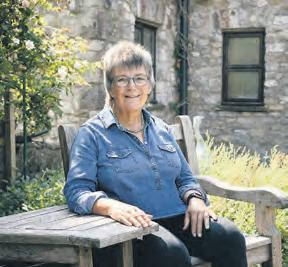
Kicking off on Friday 15th August is Jekka McVicar to discuss her new book, ‘100 Herbs to Grow’. An organic grower of herbs and horticultural author, designer, consultant, judge and moderator. The following day, Saturday 16th August, Joe Bagley, The Houseplant Doctor™, will deliver a talk that will take you on a deep dive into the world of houseplants.
Broadcaster and writer Carol Klein will speak on Sunday 17th August to launch her latest book –‘ Hortobiography ‘- a lyrical and moving memoir told through the stories of the gardens she has loved throughout her life.
A limited number of special Early Bird Tickets, which give access to the show one hour before general opening hours on Friday 15th or Saturday 16th August are currently available online.
The AUGUST issue of Country Gardener will be available from Saturday 2nd August Find your nearest stockist www.countrygardener.co.uk/magazine/stockists
The Festival of Archaeology is the biggest archaeological celebration over the next few summer weeks.
National Trust places in Devon will be organising activities ranging from guided walks, finds handling, talks, children’s activities, surveying and excavations to help members and visitors to find out more about archaeology.
Knightshayes, Bolham, Tiverton EX16 7RQ
19th July-3rd August. Visitors can discover archaeological features dotted around walking through the garden at Knightshayes. Keep an eye out for features that you may not have noticed before that tell us how the history of the garden can be read.
Greenway, Kingswear, Brixham TQ5 OES
Heritage Explorer Trail 19th July to 3rd August. Agatha Christie and her husband Max Mallowan spent their days on archaeological digs, sharing a common love for the past. But it’s not just their finds which you can discover at Greenway. Everywhere you look there are unusual and fascinating features that hint at Greenway’s past.
There’s the chance to discover more on this self-led trail around the garden. Inside the house, take a closer look at some of Agatha and Max’s finds on their digs.
Sweet, succulent figs may sound like exotic treats for warmer climes, but if you choose the right variety, you can enjoy home-grown figs in a mild, sunny site.

Who’d have thought that figs would be one of the easiest fruits to grow?
They’re undemanding, hardy and productive, and as they grow best in pots, a fig is the ideal patio tree. When they’re this good and this straightforward to grow, what could be better than growing your own figs?
Fig trees grow best and produce more fruit when their roots are restricted. This means that the ideal way to grow them is in large pots. Position them against a sunny south or east facing wall in a warm, sheltered area. If you’d rather grow your fig tree in the ground, you will need to bury rubble or paving slabs around the tree to get the same effect. The tree will also be happy in a conservatory or greenhouse if it gets plenty of light and warmth. A position in full sun is best, although most varieties will cope with a little light shade in the afternoon.
The best soil is loamy, well-draining and fertile - this describes most ordinary garden soils, but if yours is on the heavy or sandy side, you can enrich it by digging in plenty of compost.
New fig trees may need to be watered more frequently until the root system is established (in roughly a year), but after that they are drought tolerant and will only need watering in hot, dry weather.
Feed your fig trees weekly with tomato food or generalpurpose fertiliser once the fruits start to appear. Your trees will also benefit from an annual mulch of manure or well-rotted compost to discourage weeds and add nutrients to the soil.
In really cold weather, fig trees need protecting - this is particularly important for young trees. Cover the branches with horticultural fleece or bubble wrap or if your tree is in a pot, move it indoors to a shed or greenhouse. Move it back outside in spring and give your tree a good mulch to stimulate new growth.
To keep your fig trees tidy, well-shaped and producing fruit, aim to prune them twice a year, removing dead or weak branches in winter and trimming them lightly into shape in the summer. You may not have to do all this every year, but a pruning session is a good opportunity to check your tree’s progress and detect any problems early on. You should avoid pruning fig trees in spring as they can bleed sap, weakening the tree.
A container grown or bare root fig tree will start to produce fruit after just a year, and you should see a decent sized harvest the year after. Once it’s established, a fig tree is
capable of producing up to fifty fruits per season! Figs are ready to harvest when they’re soft, the neck of the fruit starts to wilt and the fruits hang down. This is typically between late summer and towards autumn. Because ripe figs are quite delicate and bruise easily, you should always pick them carefully and handle them as little as possible. Wait until they’re fully ripe, as they won’t ripen any further once picked. To pick your figs, gently pull or cut the fruit from the stem, leaving some of the stem attached if you can, as this makes them last longer.
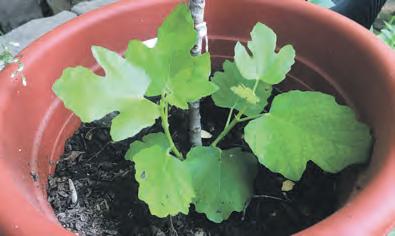
If you chose to grow your tree in a pot, choose a large, deep one at least 30cm deep and wide. Put a layer of broken crockery or gravel in the bottom of the pot and add compost to fill a third to a half of the pot. Take your fig tree out of its nursery pot or ecowrap and loosen the roots if needed. Fill in the pot with compost and firm down.
Trees in pots will need more regular watering and feeding than those in the ground and will benefit from a fresh layer of mulch at the top of the pot every year. Aim to re-pot your tree every two years into a larger container. Signs that your tree is outgrowing its pot include:
• Soil drying out quicker than it used to.
• Roots poking out through the drainage holes.
• The tree looks miserable - the leaves may be yellowing or the crop not as good as it used to be.
Choose a pot at least 25per-cent larger than the previous one and use fresh compost every time.
It can take seed grown figs many years to produce fruitbut for the gardener with a bit of time it’s worth a go? You can collect your fig seeds by scraping them out of a ripe fig. Rinse them and let them dry, then you’re ready to start. Plant seeds in a small pot of compost or potting mix,
about one cm deep. Water the soil to moisten it, but don’t overwater or your seeds could rot.
Cover the pot with a plastic bag or plastic bottle with the bottom cut off, then place your pot in a sunny, warm spot .Seedlings should start to appear in a few weeks to a few months. When this happens, you can take off the plastic cover.When your plants are large enough, you can pot them on into bigger containers. Keep growing them indoors until they’re about 30cm tall and have a few pairs of leaves, then plant them in their final position in a large pot or in the ground.
Brown Turkey - best for beginners
Brown Turkey grows well - it’s resistant to most pests and diseases and it crops better than any fig in the UK. It’s compact - you can grow it in a pot or train it up a wall - and has the reputation of the best taste of any fig.
Brunswick Fig - best for cold areas
This is a great choice for colder parts of the country or even garden, as they’re hardy down to at least -5°C. They’re naturally small, ideal for container growing and in a hot summer, they’ll produce two crops per year.
‘Little Miss Figgy’ - best for smaller spaces
This pocket sized fig tree grows to just 1.2m x 1.2m, making it a great choice for patio pots and smaller spaces including balconies and conservatories. The fruit crop isn’t small however - you’ll still get loads of sweet and delicious figs.
WHAT MONTH ARE FIGS RIPE IN THE UK?
Figs can produce several stages of crop simultaneously but usually, only one crop will ripen in late September. The tiny, pea-sized embryo fruitlets formed in the autumn are next year’s harvest – they will overwinter to produce a crop of figs the following year.
DO FIGS DO WELL IN POTS?
Figs thrive in containers and are an excellent option for gardeners with limited space. If you live in an apartment with only a balcony or reside in a cold climate where winter temperatures drop significantly, container gardening might be your best bet.
HOW CAN YOU MAKE FIGS GROW BIGGER?
If growers can maximise the growth area and reduce the number of fruits on the tree, then the existing fruits will likely grow larger. Ultimately, the balance of energy within the tree plays a crucial role in determining fig size.
WHY ARE MY FIGS SO SMALL?
Not enough water is a common reason for small figs on a fig tree. Fig trees need consistent moisture, especially during the growing season. If the tree doesn’t receive enough water, the figs will remain small or drop off prematurely.
WHY DON’T MY FIGS RIPEN?
Fig trees are very susceptible to stress and when under stress, they will slow down or even stop ripening their fruit. The most common stress responsible for when figs don’t ripen is lack of water especially when the weather is warm. Fig trees in containers are especially prone to this.
WHERE IS THE BEST PLACE TO PLANT A FIG TREE?
The ideal location for planting a fig tree in the UK is a warm, sunny, and sheltered spot, ideally against a southfacing wall. This provides the tree with maximum sunlight and heat retention, which are essential for fruiting and ripening in the UK’s climate.
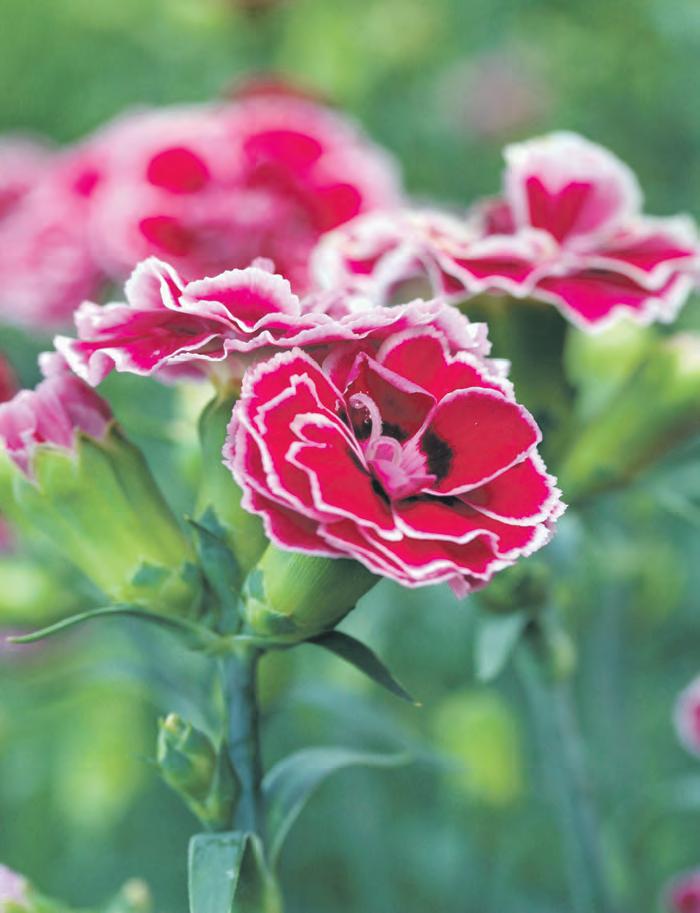





Reach a passionate and affluent audience of gardening enthusiasts
Circulating 100,000 copies which are distributed to over 500 outlets
Fine Turf (Devon) Ltd, a family run business established in 1966, supply a locally seeded turf, suitable for a variety of gardens, which has been treated and fertilised several times throughout the growing period.
If you would like to advertise your business or service in our magazines, please contact
We also supply topsoil, composts and landscaping bark for all your gardening needs, we can mix these for your requirements for planting flowerbeds and vegetable plots. All our topsoil is certified and stored dry all year round, as are the composts.
corina@countrygardener.co.uk Tel: 01823 410098


652538 Lower Waye Farm, Ashburton TQ13 7ET




Set within the picturesque countryside in Abbotsham, Kenwith Castle care home offers more than just comfortable living— it provides a vibrant community where residents get to continue following their passions and interests. Surrounded by beautifully maintained grounds, the home encourages residents to stay active through gentle exercise while getting close to nature through shared gardening projects.
Gardening offers gentle physical movement, mental stimulation, and social interaction. Residents are invited to take part in a range of activities, from planting and potting out seasonal flowers and herbs and watering the planters on the balconies, to light digging and helping with garden planning. These sessions are carefully adapted to be accessible to everyone, regardless of their ability and previous experience, ensuring that everyone can be involved in a way that is meaningful to them. The gardens serve as more than just a scenic backdrop; They are a place where friendships grow alongside the plants. Regular group sessions provide a relaxed setting for residents to connect with one another while enjoying the calming benefits of being outdoors. Whether working together to pot up summer blooms, tending to the flowers on the balcony areas or simply sitting amongst the greenery with a cup of tea, the garden naturally helps to brings people together.
Kenwith Castle, which is part of the not-for-profit charity, Care South, provides residential, respite, and dementia care to residents. The garden has been designed to offer a sensory space for residents, including those living with dementia or a sensory impairment. Scents from sweet peas, lavender and roses can stimulate memories, whilst
the sense of touch can be stimulated through tree bark and grasses, and residents can hear a host of sounds from bees and birds who visit the garden.
The garden features wide, flat walkways and raised flower beds making them accessible to all, with plenty of outdoor seating areas and benches for enjoying some quiet time. It’s also the perfect setting for residents to enjoy a host of garden parties and barbecues to make the most of the sunnier weather, with friends and families always encouraged to join in the fun.
The care home benefits from expansive landscaped grounds featuring a picturesque lake with stunning countryside views, offering quiet spaces for moments of reflection. The spacious grounds are also home to a community of assisted-living bungalows, Kenwith Castle Gardens and Kenwith Meadows, as well as The Pavilion, which offers a sociable meeting hub and facility for the

exclusive use of the residents.
Special events through the year will see the community gather in the garden of Kenwith Castle to celebrate Care Home Open Week with an open day event on Saturday 21st June from 2pm to 4pm featuring live entertainment, farm animals, a barbecue, arts and crafts and garden games. Residents and staff at Kenwith Castle will then host their Summer Fayre on Wednesday 27th August from 2pm to 4pm featuring stalls, entertainment, and a tombola. Both events are open to the wider community to come along and experience the warm, friendly and inclusive atmosphere of the home.
The Kenwith Castle care home team host their ‘Welcome Wednesdays’ session every week from 2pm to 4pm for visitors to enjoy activities and socialise with the residents over tea, coffee and cake. There is no need to book –just drop in on the day!
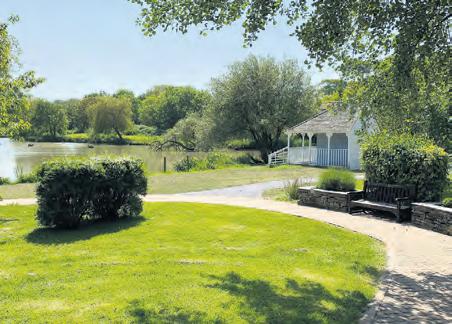


Scan the QR code to find out more about living at Kenwith Castle and meet the Home Manager.
It is the height of the gardening season and there’s lots to think and worry about. Our list of questions from readers grows ever bigger and this month has a wide variety of problems. If you have a query or gardening problem you would like help with then email us at editorial@countrygardener.co.uk
I have a good crop this spring of runner and climbing French beans. I have left some of the older pods on the plants to swell and produce seed. Can I later dry these and save them for next year?
Timmy Greene Barnstable
The simple answer is yes. You can leave the pods on the plants until they wither and then start to splitthen lay them out on a newspaper indoors in a dry airy place until they are completely dry. Open the pods and remove the seeds. Store them in a cool dry space in a paper envelope. If you store in an airtight box make sure the seed has really dried out.
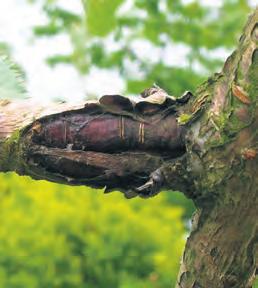

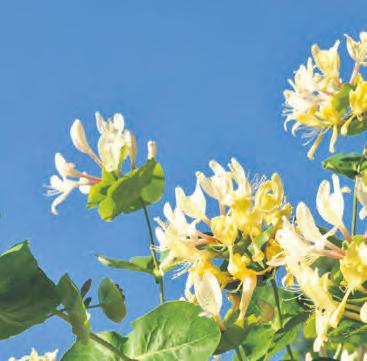
My apple trees are showing signs of slight dieback. I have also noticed similar problems on the mountain ash or rowan tree. The dieback seems to be associated with roughened patches on the bark. Is there anything I can do?
Archie Johnson
This sounds like apple canker. This is a fungal problem which is quite common and which you may also find on pear trees. The cankers that form start to ring the infected stems or branches. As a result, growth becomes poor and spindly. If the canker rings the branch entirely then everything beyond that point will die back. Prune out all the infected limbs. Take the branches back to perfectly healthy growth and to a suitable outward facing spur or bud. If the canker is present on the main stem or trunk of the tree, then obviously you cannot cut this out. In this case take a sharp knife and attempt to scoop out the entire cankered area.

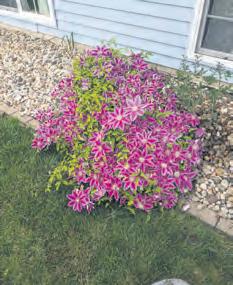
Help! My pond is now bright green and packed full of what my neighbour says is blanket weed. Is there anything I can do?
Andrew Hammond Ilminster
If your pond has become green and full of a tangled mass of strands of that common problem, blanket weed it will not only look awful but may also entangle fish or wildlife as they swim. The best method of control is to regularly use a rake or a stick to remove the blanket weed, pulling it out of the pond and composting it or binning it if you do not have a compost bin. Make sure you leave the mass of weed on the side of the pond and trailing into it slightly for a few days before composting so that pond life can escape back to the pond!
Some of the stems of my clematis have fallen and are growing along the grounds where they seem to be doing quite well. Can I leave theme to act as ground cover or it is in their nature just to be climbers?
Keith Greene Lyme Regis
A lot of gardeners use this trick of using clematis as ground cover as they provide lots of flowers and the result can be very attractive. Climbers have no inborn need to climb - just somewhere to grow and this is also true of the yellow veined honeysuckle or climbing hydrangeas, and roses especially ramblers can also be used this way.
Can you tell me why does my honeysuckle not flower. It is on a south facing wall in very well drained sandy soil. It has plenty of foliage and is two years old.
Linda Farley Minehead
There are lots of different types of honeysuckle, some of them with special needs. It could be something as simple as the plant is not yet old enough to flower. Most varieties of honeysuckle bloom on new wood and some are best pruned straight after flowering so if the pruning regime has been done wrongly that would be an issue. Another issue could be watering: honeysuckle do not like to dry roots which can often happen if grown close to a wall/trellis. If the plant feels unable to produce a crop it will abort resulting in loss of buds. This can sometimes happen where the plant is growing too well and has been fed too much nitrogen – if this is the case an application of sulphate of potash can improve the situation.

Can you suggest a few shrubs that would be looking good in my garden in early September? Our garden always looks good in spring and summer but is always disappointing in September and we would long term like to remedy this.
Mary Logan Dorchester
There are lots of things which should be particularly attractive, including potentillas, perovskia, indigofera, hypericums, hydrangeas, fuchsias, Hibiscus syriacus, Buddleja davidii, caryopteris, ceratostigma, vincas, hebes and Abelia grandiflora. Your local garden centre or specialist nursery will have shrubs which are looking particularly good at that time of year, will be prominently displayed, so you have got the pick of the bunch and of course you have also chosen a perfect time for planting.
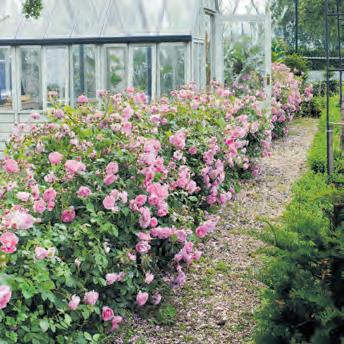
Our Cambridge Favourite strawberry plants still look very healthy and this year we had a bumper crop after three years. Can we keep them for a fourth season or is this about the end of their active high cropping?
Zoe Richards Burnham
This is one of the most vigorous varieties you can grow but it is likely that cropping will start to decline and a less warm early summer than we have had this year might slow the fruit down a lot in the fourth year. However, it might be worth keeping them for a fourth season.
I read your article last month about old roses and wondered if we could use them to form a hedge rather than other shrubs. At our gardening club I was told they would be a lot of trouble as a hedge.
Rea Davies Portsmouth
The big advantage is they will provide almost continuous colours throughout the summer and into the autumn. If you opt for upright roses you will need to stagger plant them if you need a substantial rather than a decorative hedge. The older varieties need space to grow so plant them five feet apart which may seem a lot but they are fast growing and will need the space. Many people worry about pruning and whether it will take a lot of time but once the roses become established you can be quite aggressive with pruning – using shears for example.
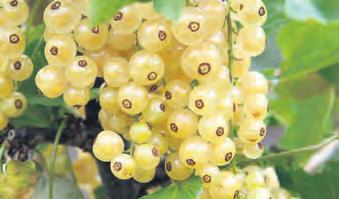
I would like to grow white currants. Are they difficult to grow? If not, what would you recommend for a small Somerset garden?
Donna Stevenson Williton
White currants ae not all difficult to grow and they seem to have returned to favour in recent years. Like redcurrants they fruit on the old wood. ‘White Versailles’ is an excellent cropper, the berries are large and the plant is certainly the best variety for wherever you are.


Can I add straw directly to the soil to improve its quality. There seems to be a difference of opinion on this?
Pam Hartley Bath
Undecomposed straw can be dug into the soil if you add nitrogen at the same time. Straw contains less nitrogen than that required by bacteria to decompose it so one pond of sulphate of ammonia needs to be added to each 110 lb of straw. Lime is also needed. Straw is a valuable source of humus and is usually rotted down with grass cuttings and other vegetable matter in the compost bin rather than being used by itself.
July is often one of the hottest months of the year and probably the best time to sit out and enjoy your garden. It is vital to keep plants looking good by regularly deadheading, which will mean a longer display of blooms. Make sure you keep new plants well-watered, using grey water where possible, and hoe off weeds, which thrive in the sunshine. There’s plenty to do to keep the display going and to enjoy great crops, including harvesting veg at its peak and feeding the lawn. Summer is progressing in its relentless way, and the garden is the place to be.
1
I love miniature roses and believe they are very underrated. Can I grow then indoors?
Katelyn McDade Bournemouth
Not permanently unless you are prepared to invest in strip lighting for them and provide the humidity they need. In most houses the light is not good enough and the air is much too dry, and they will quickly wither. If you position them on a windowsill the sun will be too strong from them. One option is a cool greenhouse then when the buds begin to show colour they can be brought into the house. They must be taken outside after flowering or the leaves will yellow and drop off.
Would you recommend foliar feeding for fruit as a good alternative to applying fertilisers to the soil. I am trying to find something different to help half a dozen fruit trees which have started to look really sick in recent years?
Ian Harrison Bristol
No. Foliar feeding is useful for the leaves of fruit trees and can greatly help plants under stress during the growing season, but it should be regarded as a first aid treatment rather than any complete nutritional answer. It is mainly nitrogen which is absorbed by the leaves, potash and phosphates are not. Start with a balanced fertiliser in the spring which is not only better but cheaper than a foliar feed.
After planting out my cucumber seedlings grew badly and began to wilt. I dug a couple up and found large numbers of tiny grey insects jumping around in the soil. Could these have caused the problem and does that mean the soil is infected?
Your cucumbers have been infected by springtails (collembola) and some species of these soil-living wingless insects feed on plant roots and are often found to have damaged tomatoes roots and other vegetables. They feed on the roots initially on stem bases and on any leaves which touch the soil. The soil will not be damaged but you need to make sure you have got rid of them. Avoid replanting where you found them. Work some new compost into the area and apply a drench of soapy water.

I have developed a love of lilies in recent years. I love their colours, strength and structure and they are a wonderful addition to borders or especially in pots. Are there any secrets in how I can increase my stock of lily bulbs?
Donna Young Exeter
Lily bulbs divide and from clumps which can be lifted and split after flowering. Small bulbs maybe found near the large bulbs and often on the stem below ground.The tiger lily (L. tigrinium) other produce bulbils in the leaf axis where the leaf and stems meet. Growth of bulbils can be artificially stimulated by removing the topmost flowering part of the stem as the flower buds appear. The seeds of many lilies can provide flowering bulbs after two years.
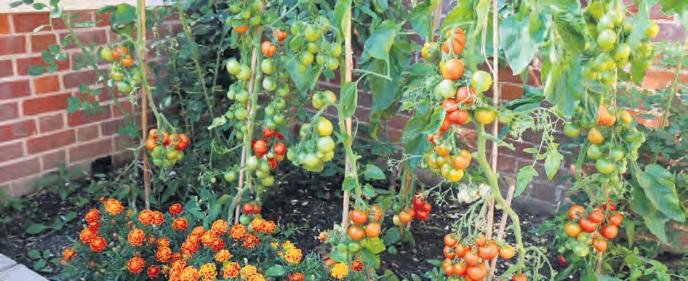
You should be seeing tomatoes flourish this month. Feeding the plants will ensure they continue to thrive all season to ensure they continue to produce healthy, flavourful fruit. Use a balanced fertiliser which is high in potassium, or one specifically formulated for tomatoes.
Feed plants every two to three weeks, moving to every week once the plant is mature. Avoid getting fertiliser on the leaves as this can cause burn. It’s also important to make sure tomato plants are well-watered before feeding, as fertiliser can cause root burn if applied to dry soil. Water deeply after feeding to help the nutrients reach the root zone.
2
One of the most important garden jobs in July is keeping on top of deadheading, particularly for bedding plants. Deadheading in July is particularly important for bedding plants to encourage further blooming and maintain a tidy appearance. Firstly, look for flowers that are faded, wilted or starting to develop seeds. Cut the flower stem back to the first set of healthy leaves or a bud. This encourages the plant to direct its energy into producing new flowers rather than seeds. It’s important to use clean, sharp scissors or pruning shears to avoid spreading disease. Always check your plants at least once a week during the growing season and remove any dead or dying flowers.
4
Supporting your plants is one of the most important jobs in June and July when there is often a great deal of height in the garden. Stake tall growing bulbs such as dahlias, lilies and gladiolus. Their flowers will make them top heavy and liable to blow over in the wind without some support. Loosen ties on trees and standard roses if they are becoming too tight. Fix tree ties so the buckle is on the opposite side of the stake to your tree, remembering to put the spacer in the middle to prevent chafing. Allow a little space for growing room but have it sufficiently tight so the tree cannot jiggle around excessively in the wind.
3
Water anything recently planted
Anything you’ve planted in the past few months will need regular watering while it puts out roots into the surrounding soil and establishes itself. Make sure that you give these plants a thorough soaking rather than a gentle sprinkle.

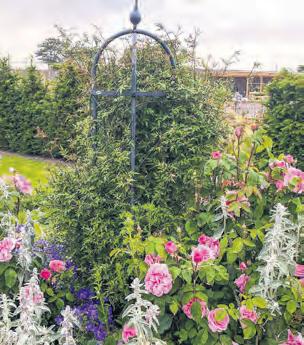
Don’t stop with making compost
Try to maintain a green/brown balance in the compost heap throughout the summer. Green materials are soft, high in nitrogen and not necessarily green in colour, for example coffee grounds, veg peelings and leafy prunings. Brown materials are often drier, more fibrous and with a higher carbon content, for example, twigs, cardboard, and wood (but not coal) ash. In the summer, most ingredients are green, which results in compost heaps with a lack of structure and air being squeezed out, so it’s important to add an equal proportion of brown ingredients.

Keep your pond healthy and looking great
9 5 8
LOOK OUT FOR ANY YELLOWING LEAVES If they are left on water lilies and other water plants, remove them promptly. Allowing them to fall off and rot in the water will decrease water quality.
REMOVE BLANKET WEED This will let oxygen into your pond. Use a net or rake and remember to give aquatic life a chance to get back to the water by piling the weed next to the pond for a day.
TOP UP WATER LEVELS. Water can evaporate rapidly from water features and ponds in the height of summer, so top them up if the water level drops significantly. Rainwater from a water butt is best – chemicals in tap water can affect the nutrient balance in the pond.
HOSEPIPE BAN. If your area is under a hosepipe ban, you can still use it to top up your pond if you have fish. CLEAR FILTERS. Remember to clean any filters and pumps.
11 6 7
In about the middle of July, watch for when about two thirds of onion tops are falling over, then push the rest down to soften the neck as sometimes they can develop a long stem and a neck that doesn’t dry very well. You don’t need to wait until the tops go yellow before lifting, but you’re looking for the bulbs to begin to change colour.
Pull them up and put them in a crate without being crowded so that air can circulate around them. Put it somewhere undercover such as in the greenhouse or garage.
Allowing them to dry like this is important as they will store better. Done this way they should keep until spring.
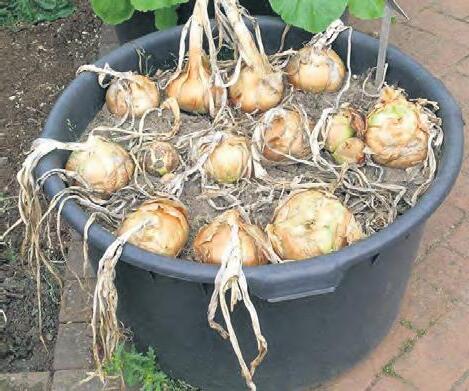
After they’ve dried in the crates for about a month, they’ll be ready to bunch up and hang in the house or in net bags until you need them.
There are lots of veg that can be sown over the next few weeks even though it is high summer to fill gaps as earlier crops are cleared and to give fresh veg into the autumn and winter. Sow kohlrabi, lettuce, leaf beet, chard, endive, chicory, Florence fennel, chervil and coriander. Finish sowing beetroot and savoy cabbage in the first week of July.
After mid-July, sow land cress, Chinese cabbage and spinach.
From the end of July to mid-August, sow mustards, pak choi and salad rocket.

Different plants have different nutritional needs and different fertilisers are available to meet them. Fertilisers are available in different combinations of nitrogen, phosphorus and potassium with a different mix being needed for different parts for the garden.
Nitrogen encourages the production of strong stems and foliage, so fertilisers with high nitrogen levels are best for lawns and leafy vegetables.
Potassium-rich fertilisers help nourish flowers and fruit without over-feeding the stems, making them well suited to plants like dahlias and tomatoes.
Phosphorus is essential for seed germination and for young plants to develop good root growth. Root vegetables such as carrots and turnips need a high phosphorous fertiliser.
Lift, divide and replant congested and over-sized clumps of early-flowering perennials such as bearded iris, polyanthus and pulmonaria once they’ve finished flowering. This will allow them to form roots and flower buds for next year in their new location before the weather gets too cold.
10 12
Take cuttings from shrubs and alpines
July is a good time to take cuttings from shrubs and alpines. Take the cuttings from non-flowering shoots and place them around the edges of small pots that are filled with peat and perlite. Water the cuttings in and keep them warm but out of direct sunlight.
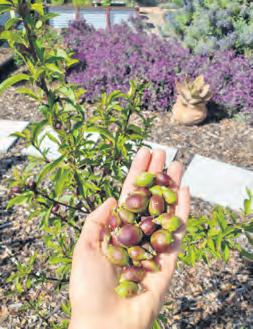
June into July is the season for maximum plant growth which mean that fruit trees can abundantly over-produce. Large quantities of heavy fruits such as apples, pears and plums on the branches can often result in a final crop of disappointingly small fruits. This is due to the high demand put on the tree’s resources and the limited sunlight penetrating its heavy branches.
July is the prime time to thin out your dense crops by removing any excess or damaged fruits from the plant, enabling it to develop a more evenly ripe crop of fruits.
Prune stone fruit trees such as cherry and plum this month, removing any crossing branches to maintain an open framework. These fruit types are susceptible to certain fungal diseases through open wounds if pruned in the winter, whilst pruning at this time helps to avoid risk of infection.
• Keep sowing seeds for salads, a few at a time as well as autumn cropping peas, turnips and spring cabbages. 13 14
• Water and feed everything regularly especially tomatoes. Tie them into their canes and pinch the outside shoots on cordon varieties to encourage fruiting. The last sowing of French beans and carrots can be done this month.
• Also transplant purple sprouting broccoli and winter leeks into their final position. Water leeks well. They will be approaching their main growing season and regular watering will help them to swell
It is a good idea to feed your roses in midsummer as this will help them produce a second flush of flowers. For any roses that have finished their first flush of flowers, trim them back before feeding. Roses need pruning because this encourages them to produce new shoots, since cutting back a branch helps the rose to produce a growth hormone. When cutting them, make a cut 5mm above an existing bud with gardening shears. Ensure the cut is angled away from the plant as this prevents rainwater from collecting and causing disease as a result.
Bamboo is an incredible plant. Fast growing, the largest member of the grass family, tough as steel, and it can be beautiful. However, if you put the wrong kind of bamboo into your garden it can be a recipe for disaster.
Bamboos have never had a good press. In recent years their reputation has gone from bad to worse and is now seen as an almost evil plant which, given favourable growing conditions, will spread quickly, with strong, fast-growing stems shooting up some distance from the parent plant.
Bamboo is in fact, a woody plant in the grass family Poaceae, with tall, upright canes and long narrow leaves. Most bamboos have evergreen foliage with canes that come in shades including green, brown, yellow and black. The bad press for the bamboo plant is not totally fair. It can be a popular screening , fast growing , dense and offering security. The problem is controlling it!
HOW BAMBOO CAUSES PROBLEMS
According to Kew Gardens, some species can grow one metre in 24 hours. Although most species of bamboo will not grow that quickly, certain bamboo varieties can become a problem if they’re not contained. There are two types of bamboo: clump forming and running. As you can guess, clump forming pretty much stays put, whereas running bamboo will run. It’s important to understand how to stop bamboo spreading, because left unchecked, running bamboo will spread all over your garden and your neighbour’s garden. Running bamboo spreads by rhizomes under the ground. New shoots can emerge several metres away from the main plant. This type of bamboo can cause damage to paving, growing up between the cracks, and spread into neighbouring properties. Clumping varieties tend to be less vigorous but can develop into large clumps if not managed.
It’s a common misconception that all parts of the bamboo underground are invasive and can regrow. However, only the rhizomes are capable of regeneration, while the fibrous roots that extend off them cannot regrow on their own. Therefore, removing bamboo is made much easier when you know that you only need to get rid of the typically tough and ribbed rhizome, leaving the fibrous bamboo roots that don’t regrow behind.
BAMBOO AND THE LAW
There’s no law restricting the growth of bamboo in gardens, but you may be held liable if bamboo in your garden invades a neighbouring property.
BAMBOOS
Choose a clumping type of bamboo as these are easier to control than running types. You should see the description ‘clumping’ on the plant label or in the description online. Clumping types have short rhizomes which form more of a root ball, whereas running types have long rhizomes which spread further from the main plant.
When planting bamboo put in root barriers to contain it. You can buy purpose-made root barriers. Plant bamboo in containers – for a large display of bamboo, try planting in long troughs and make sure pots are as deep as possible, at least 45cm. For established bamboos that are outgrowing their spot, you can control them by digging a trench around the bamboo. It should be about 30cm deep and at least 30cm from the bamboo. Cut through any rhizomes in the trench and dig out any that have grown beyond the trench.
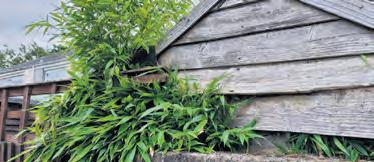
How to kill bamboo
The best way to get rid of bamboo is to dig it out. Make sure that you remove all the pieces of rhizome as bamboo can grow back from a tiny bit of root. First of all cut the canes down as these can be saved and dried for use in the garden. Then dig out the clump, removing all the roots.
Can boiling water kill bamboo?
Boiling water can help kill bamboo shoots and roots that are near the surface, but using this method may not eradicate the whole plant. The water might not penetrate deep enough to kill all the roots. It will need repeated attempts on any new shoots that emerge. A more effective method is to dig out the plant or use boiling water to weaken the plant before digging it out. How do I stop neighbours bamboo from growing in my garden?
You can insert a physical barrier into a trench to form a blockade. Purpose made bamboo root barriers are easiest to handle and insert. Edges should overlap by at least 30cm (1ft) and be bonded. The barrier should extend above the soil level by at least 7.5cm (3in) to prevent rhizomes growing over it.
Can dead bamboo come back?
There have been a lot of instances when what looks to have been a dead plant starts to recover So in fact, there is always the threat that new shoots and stalks will grow back.
What happens if you cut the top off bamboo?
Once topped, bamboo will never grow vertically again. Bamboo doesn’t experience secondary woody growth like a tree. Once the bamboo is topped, it will remain the same height for all the cane’s life cycle. Does bamboo have a lifespan?
Without any protective treatment, most bamboo species have an average natural durability of less than three years. Stored under cover, untreated bamboo may last up to ten years.
Is bamboo stronger than wood?
Yes, bamboo is generally stronger than wood, especially in terms of tensile strength. While it’s technically a grass, bamboo has a higher tensile strength than many common hardwoods like oak and pine. This means it can resist stretching and bending forces more.

Ellie Davison’s mother Hettie was a gardener who over the years developed her own ways of doing things, ways which her daughter remembers with affection. I don’t want to give the impression that my mother was a miserable so and so but she was a no nonsense Yorkshire born woman who lived for 25 years in Somerset and always remembered her roots and remained true to them.
She was a passionate gardener and vegetables were her forte on an acre plot plus for a few years an allotment.
I love your magazine and when I read about tips and tricks passed on from older gardeners, I think of her. So much so I have been trying to remember and share some of her favourite garden ‘speeches ‘which she would pass on to anyone who cared to listen.
The first had a very Yorkshire theme to it when she told people not to waste money on fancy gadgets like compost aerators or tumblers or herbal compost activators.
Nature she would say has been turning garden waste into compost for millions of years and needed no encouragement from you. You didn’t need a bin or a home-made cage – just have a tidy pile for composting out of the way which you can get to easily and turn. She did this for as long as I knew her, making perfect compost.
When it came to pruning hybrid tea roses which she loved she advocated a very basic method: take the shears to them and don’t be precious, don’t waste time looking for every outward facing bud, just cut them back hard like you would a hedge. Later in life she told my husband to use his hedge trimmer!
She had a favourite dislike for buying nest boxes for wildlife to nest in or hibernate in from hedgehogs to bees. They were she suggested a total waste of money apart from birds. They didn’t work and were not worth buying. In later life again she conceded a bit about nesting holes for solitary bees but thought a few drilled holes in a spare piece of wood would do the trick perfectly.
She also thought it was a waste of time trying to get rid of moss on lawns. In a damp climate she though moss was a necessary component of any grass and took a lot of time and effort to get rid of. Gardeners in former times she always said had better things to do with their time. Moss would always come back in the winter and I think she advised people who didn’t want moss in their garden to go and live in the Mediterranean!
She also went against popular gardening advice when it came to planting shrubs and argued it wasn’t necessary to fill in a newly dug planting hole with organic matter. She argued that roots would always struggle to break out of the new compost into the surrounding soil
Also, the modified soil would dry out in the summer and the hole would fill up with water in the winter. She always planted shrubs and trees into unaltered soil and then added organic matter as a top dressing after planting. I don’t know whether she was right or wrong but I do remember everything she planted seemed to end up looking wonderful. She also loved to see insects in the garden and while not being able to identify them all thought some of the ugliest were probably the most useful. Hoverfly larvae may not be good lookers she said but few were as good at hoovering up aphids.

“It’s a common misconception that all parts of the bamboo underground are invasive and can regrow”
I think these gardening views from the past moved from being the ramblings of an elderly lady to good quality great advice from a wise gardener which might be a bit away from the garden advice being offered to gardeners these days but certainly worth stopping to think about.
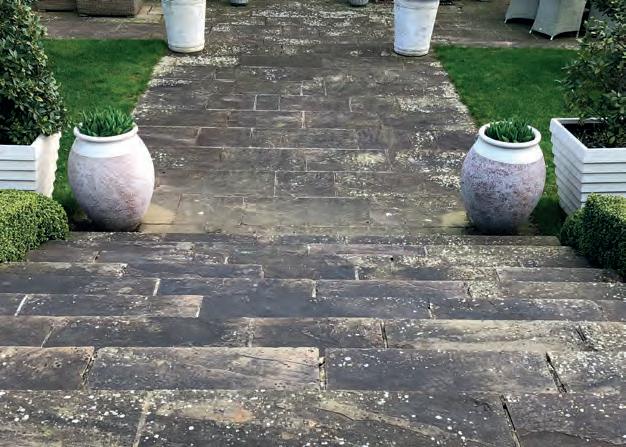

Patio Black Spot® Remover




Patio Black Spot® Preventer
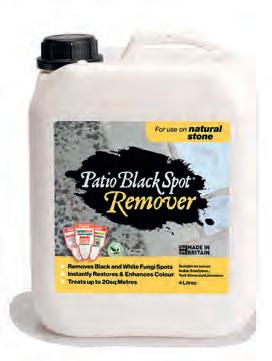



We hope you enjoy our latest round up of views, questions and ideas from our very enthusiastic and helpful readers. If you want to join in email editorial@countrygardener.co.uk
I saw tomato plants, not very well established, say about three inches tall in a garden centre two weeks ago. They were priced at £4.50 per plant and didn’t look all that healthy. I bought a packet of seeds with 100 seeds in February for £3.50 and the ones I need are flourishing in my greenhouse. The rest I have given away to friends and family. Is this what comes when you plan early and are patient?
Irene Thompson Wellington
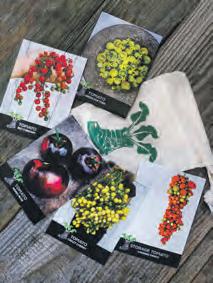
Sage and rosemary are a great way to get value into the garden. Just buy reduced plants from the supermarket herb section (I’ve also had success with sage cuttings just struck in the ground). Rosemary makes a lovely informal border and bees love it, but a supermarket sage plant after three years is a thing of beauty: absolutely covered in big blousy pillars of purple flowers and that gorgeous soft grey foliage. It will be a mass of bumble bees on a sunny day. Absolutely the best value plant: I had loads in my last home, buying plants from different supermarkets/ different times of the year sometimes meant you got different looking ones too.
Pam Harrison Bath
This summer I’m on a real mission again to save money and it’s been so far hard work but good fun. Herbs like rosemary, basil, oregano, thyme are very easy and save you lots of money throughout the summer. Low maintenance. Cherry tomatoes are not bad, £4 for a pack of seeds that ends up maybe saving me £30 to £40 throughout the summer, just like last year. My grandchildren love to harvest them.
One that surprised me was kale. I bought a £2 seed pack and have already had an amazing lot of plants which I can harvest in the autumn.
Other thing I love is green onions or even chives. Buy once from store, cut them down except the white root part, leave those in water for a few days and replant them. They grow fast and regrow each year- £2 bundles of each have served me for two years now. Needs must sometimes with a young family but it all gives me a great sense of achievement- and I am not really a gardener.
Maggie Thomas Portsmouth
allotments?
Allotments may be an unlikely political battleground, but the public appetite for rented garden plots has seen a record number of local authorities clash with the Government.
A debate has taken place in Parliament over the proposed Planning and Infrastructure Bill and the Government has been urged to provide more ‘space to grow’ with increase numbers of allotments as part of that.
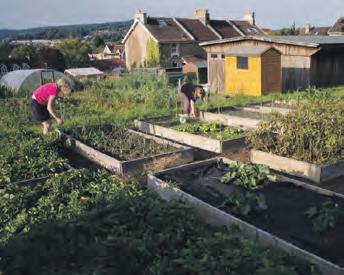
As part of the campaign with the Royal Horticultural Society, National Allotment Society, Horticultural Trade Association and members of the National Community Garden Network, there needs to be changes in legislation to provide more land for allotments and community gardens.
Eight million people in the UK have no garden at home and the waiting list for allotment plots is now nearing 160,000.
The Minister for Housing has said proposed legal change was ‘not necessary’ as there was ‘nothing preventing’ local authorities from including these policies in their spatial development strategies.
She responded to that, by stating: “A person’s ‘space to grow’ should not be dependent on their postcode, or the whim of their council. Especially when 60 per-cent of the loss in allotment land in the last 75 years has been eight times greater in deprived communities.”
Small-scale growing projects are proven to reduce stress, improve mood, reduce loneliness and support overall well-being through light physical exercise. I urge your readers who I am sure are passionate about this subject to start knocking on the doors of their local councillors and MP’s and contact them. There is just a suggestion we might be able to do something.
Amanda Prescott Taunton


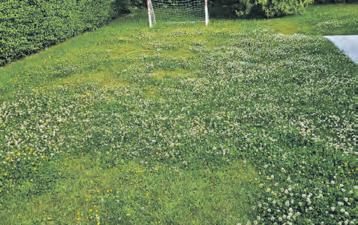
Here's a picture of my clover, daisy and buttercup filled lawn here in Somerset. I just let it grow and I prefer it this way and clearly so do the bees. Most people just seem to think I'm lazy and it needs 'treated' and it will soon turn into a mess. But for a few weeks it has been a delight. Even though wild flowers are classed as weeds, they are beautiful and so good for wildlife, I have buttercups, daisies, self-heal, nipplewort, clover and wild geranium, so nice to see the bees enjoying the flowers.
Anna
Harris
Burnham
I am always telling my gardening friends not to throw out coffee grounds. They are a fantastic source of nitrogen, a vital component for flower growth, and also contain trace amounts of other nutrients like potassium, phosphorus, and magnesium, which contribute to plant health. I have always used them on my garden and it really does work wonders. They can enhance soil quality as coffee grounds promote aeration and water retention. They also work on camellias, hydrangeas, and roses. Not only will you have healthier plants, but you will save on garden fertiliser, and know that you are being 'green' as a gardener.
Kerry Greene Bideford
I have been reading your excellent magazine now for many years and I love it. It offers much better advice and help than many more high-profile gardening titles. But that is not the reason for me writing to you. I am rather tempted to start a formal fan club for your tree expert Mark Hinsley whose column every month is something I always look forward to. He has such a passion for trees. Last year I went along to a gardening club where he was giving a talk and he was wonderfulknowledgeable, witty and with an encyclopaedic knowledge of trees. Anyone want to join the club?
Hetty Braithwaite Dorchester

I saw a sign at our local arboretum last week which fits almost alongside the one you highlighted in your magazine last month. It said: "Here we believe the best time to plant a tree was 20 years ago. The second-best time is now."
Andrew Fisher Cheltenham
July is surprisingly possibly the best chance there is in the whole summer to get out and about
There is a quoted gardening saying that June in the garden is busy with growth and August is busy with harvesting but July is a time for putting one’s feet up. If that is at all true then it bodes well for gardeners who do want to take a busman’s summer break and get out and enjoy other people’s gardens ,plant fairs and garden shows and high summer events.
When it comes to gardening events it remains one of the busiest times in the year, village and local shows come into their own, reflecting the hard work which goes into such traditional events; the great gardens of the south west are often at their colourful peak in the warm sunshine and long evenings and there are still high profile shows to be visited. For the garden lover there’s a huge choice. NGS gardens open are still in their peak of activity and deserve your visits.
Certainly its true that this is the month when you can treat yourself with a day out and we have some suggestions for you.
Barthelemy and Co near Wimborne Dorset is a Japanese maple nursery that was founded in 1920. From sourcing and picking the seeds, some years over 100,000 Japanese Maples are produced and grown each year on the nursery by the Skinner family. Approximately 1012,000 of these seedlings go on to be grafted with named varieties, using techniques passed down through the generations. Their focus on Japanese Maples has allowed them to perfect their growing and grafting techniques, producing some of the finest specimens available in the UK. Barthelemy & Co is not just a place to buy plants, but a living museum of horticultural history, where every aspect of the growing process is done with care and attention to detail. Visitors to the nursery can see the passion and dedication involved on display and leave with a new appreciation for the beauty and complexity of these unique and captivating trees.
Barthelemy & Co, 262 Wimborne Road West, Wimborne, Dorset BH21 2DZ Tel: 01202 874283 www.barthelemymaples.co.uk
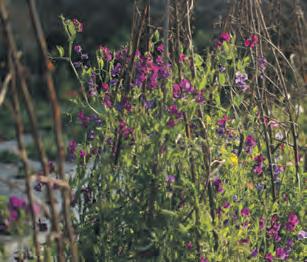
The Bishop’s Palace garden in the heart of the City of Wells has an exciting summer ahead. The 14 acres of tranquil gardens in the heart of medieval Wells will be hosting a series of summer events for the family including a sketching tour, a performance of Sense and Sensibility, Shakespeare’s Twelfth Night and on July 19th a horticultural highlight featuring a beginners guide to growing cut flowers. The focus of course remains the stunning, gardens in the heart of Wells.
You can wander along and around the many herbaceous borders, savour the scent of roses in the parterre, admire the beautiful views of the gardens, moat and further afield from the top of the ramparts.
Over the years the gardens have changed as successive bishops have added their legacy and today these gardens have Grade II listed garden status due to their historic nature. In 2016, the gardens were acknowledged by the Royal Horticultural Society, by being made a “Partner Garden”.
Entry is free most Fridays to RHS members with starred cards. This offer is not valid on certain event days so check the website for details where you can find details of all the summer events being held.
Bishop’s Palace and Gardens, Wells BA5 2PD www.bishopspalace.org
The popular gardens on the Dorset/ Somerset border is inviting visitors to visit and immerse themselves in the charm of the sweet pea fortnight, from 1st to 15th July and a highlight of the summer season. As always, the abbey gardens have prepared wonderful array of sweet peas carefully chosen and sown.
The iconic wigwams have been lovingly erected and freshly planted, ready to support the elegant tendrils and abundant blooms that will soon weave their way upward.
The garden anticipates peak bloom in July, when the garden will be at its most vibrant and fragrant.
Whether you’re a gardening enthusiast, a flower lover, or simply looking for a tranquil and beautiful place to spend a sunny day and experience this seasonal spectacle. The gardens are open from 10.30am to 5pm with last entry at 4pm. Free entry to Forde Abbey & Historic House Members.
A date for the diary is 6th September and the annual gardening and plant fair.
Forde Abbey Estate, Chard, Somerset TA20 4LU
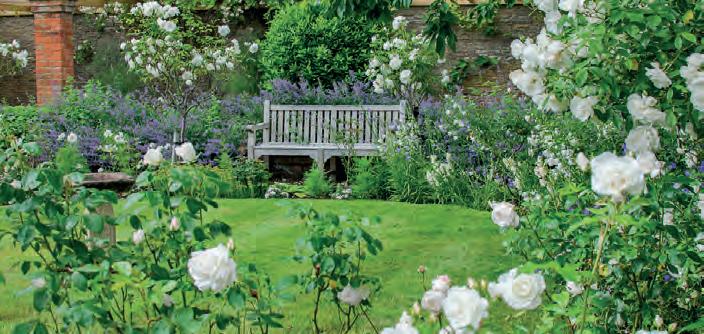




Kelmscott Manor was the iconic country home of William Morris; poet, designer, craftsman, socialist and founding father of the Arts and Crafts movement. This Grade I listed house was loved by Morris as an example of traditional craftsmanship in harmony with the nearby village and surrounding landscape, towards the very upper reaches of the Thames.
Award-winning poet Robert Seatter and acclaimed visual artist Jessica Palmer will bring the fascinating stories and compelling atmosphere of Kelmscott Manor to life as part of the Manor’s programme of learning and public engagement alongside our inspirational new exhibition,
‘A literary man’: William Morris and the Book which is open now and runs until 25th October.
Kelmscott Manor Kelmscott, Lechlade GL7 3HJ
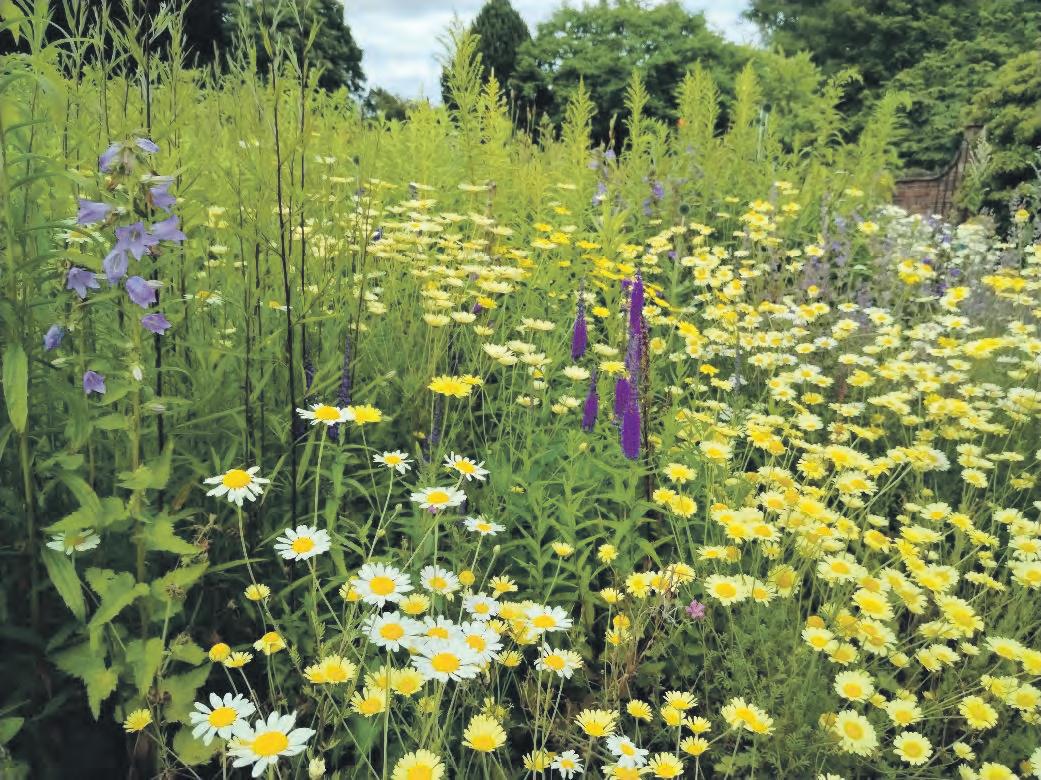
our website for full details of admission fees and times of opening.



ENJOY LAZY DAYS IN HIGH SUMMER AND THEATRE ON THE LAWN
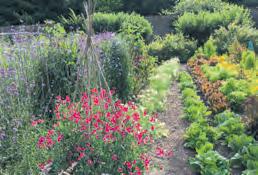
Visit our family home with its beautiful Walled and Woodland gardens, Fernery and Bog garden, walks to the Atlantic Coast, fascinating architecture, collections, displays and film exhibition. Location for Enid Blyton’s ‘Malory Towers’.
* Dogs welcome * Holiday Cottages * Hartland Quay 1 mile * Homemade light lunches & cream teas * House, Gardens etc and Café open until 2nd October Sunday to Thursday 11am - 5pm (House 2pm - 5pm last adm 3.45pm)
For more information and special events see www.hartlandabbey.com Hartland, Nr. Bideford EX39 6DT 01237441496/234


GARDENS & TEAROOM
Open every Friday 2pm - 5.30pm from 2nd May to 26th September

Also last weekend in May & August Bank Holiday weekend - Sat, Sun & Mon GARDENS: adult £6, child £1
CADHAY, OTTERY ST. MARY, DEVON, EX11 1QT 01404 813511 www.cadhay.org.uk Member of Historic Houses

Tea Room & Walled Garden Nursery
WELL BEHAVED DOGS ON LEADS WELCOME

Marwood Hill Gardens is a tranquil 20-acre private garden nestled in a North Devon valley near Barnstaple. Established in 1949 by Dr. Jimmy Smart, this 20-acre garden has evolved into a horticultural haven, featuring three serene lakes, a variety of sculptures, and an impressive collection of plants from around the world including four National Collections, Champion Trees and Marwood is also Camellia Garden of Excellence.
Indulge in homemade cakes and light lunches in the award-winning tearoom, while the plant nursery offers an unusual array of plants for sale.
Enquiries & Tea Room 01271 342528
Plant Sales & Nursery 01271 342577 e info@marwoodhillgarden.co.uk w marwoodhillgarden.co.uk
Marwood Hill Gardens, Marwood, Barnstaple, Devon EX31 4EA
We look forward to welcoming you on Thursday 7th August 2025
Fabulous entertainment, Delicious food and drink, Over 400 trade stands.
Majestic livestock and horses, Bees and Honey, Dog Show, Vintage Tractors and Classic Cars, West of England Hound Show, Cookery Theatre, Young Farmers Clubs and NEW Family Fun Zone.
Please apply for trade, livestock and horse schedules.


ADVANCE TICKETS JUST £20 (ACCOMPANIED UNDER 16 GO FREE) AVAILABLE FROM www.honitonshow.co.uk
Secretary: Marcelle Connor, Bank House, 66a High Street, Honiton, Devon, EX14 1PS info@honitonshow.co.uk

We produce and grow the largest selection available in the UK. Plants are pot grown and suitable for garden, patio or bonsai.
Visitors welcome Mon-Sat 9am-1pm & 2pm-4pm
Barthelemy & Co (DCG), 262 Wimborne Rd West, Stapehill, Wimborne, Dorset BH21 2DZ
Tel: 01202 874283
enquiries@barthelemymaples.co.uk www.barthelemymaples.co.uk


Currently, the popular north Devon gardens at Marwood are adorned with vibrant colours characteristic of high summer, ranging from the intense scarlet shades of Rosa moyesii to the delicate pink tones of phloxes and the creamy, frothy blooms of astrantia.
The award-winning National Plant Heritage Collection of astilbes are well under way – they surround Marwood’s three lakes and streams and give off a crescendo of colour, from gaudy pinks and reds to the muted tones of silver and white forms.
Stately bushes of Cornus kousa grace the borders with their display of creamy-white bract like flowers while others turn rosy- pink. It is such a cheerful time of year, with people and plants alike enjoying basking in the sunshine, and long days allow us to soak up the enormous number of plants in flower. It’s also a great time for a cream tea at the tea-rooms, not forgetting to take a peek, and maybe even buy something in the fascinating plant sales.
Marwood Hill Gardens, Nr Guineaford, Barnstaple, North Devon EX31 4EA
Tel: 01271 342 528 www.marwoodhillgarden.co.uk
The borders at the popular Devon gardens at Cadhay will be at their best in July and the new gardening team are starting to make their mark giving these popular gardens a different feel. Somehow, they have managed to keep the blanket weed at bay in the ponds which look magnificent with the water lilies and hostas at their best. The dahlias should be as good as ever and the allotment holders have excelled themselves in the kitchen garden. Cadhay is just outside Ottery St Mary with the postcode EX11 1QT. The gardens are open from 2pm to 5pm every Friday afternoon and more details can be found on cadhay.org.uk

The Honiton Show is planning for a great celebration of rural life and entertainment in the east Devon countryside on Thursday, 7th August. There will be an array of entertainment including the return of the Bolddog Lings FMX team return, Honda’s official and the UK’s number one motorcycle display team. Organisers also will welcome the HOH Equestrian Team performing two displays with skilled team of horses and riders. There is also children’s entertainment in abundance with the animated characters Sheridan the Sheepdog and Pumpkin the Pony, and the chance to enjoy the Twistopher Punch & Judy Show and Professor Crump on his stilts. The fabulous Magical Musical Bike will be touring the showground hosting games and a giant bubble show! A new family fun zone includes Whacky Races for all ages, Professor Pop’s bubble workshop, a circus skills workshop and a pottery painting den. Take a trip down memory lane with over 100 Vintage Tractors and over 50 stunning classic cars. There’s also a vast array of shopping on offer, food and drink including a cookery theatre with a full schedule of chef demonstrations.
For further details or information on becoming a member of the association please contact the secretary on 01404 41794. Gates open at 8am with family entertainment until 6pm. Discounted early bird tickets are available for £20 in advance, (show day prices are £22) accompanied children (Under 16) are admitted free! Visit www.honitonshow.co.uk for early bird tickets.
From stately acres to country cottage gardens the National Garden Scheme opens exceptional private gardens across England, Wales, Northern Ireland and the Channel Islands. In July, thousands of beautiful spaces open, many serving delicious home-made refreshments and plants for sale, all offering wonderful value for money while helping to raise millions for nursing and health charities each year. Visit a National Garden Scheme Garden in July and be inspired. Find a garden open near you: www.ngs.org.uk

Be part of the world’s leading cultivated plant conservation charitySomething for everyone interested in plants and their conservation:
• alks and celebrity lectures,
• plant fairs, garden visits,

• plant exchanges
• propagation & social events
- A return to our New Venue

Staunton Country Park
Petersfield road, Havant, PO9 5HD Sun 31st August 2025 1pm - 5pm
Set in a historic estate with a listed Regency landscape that contains parkland and formal gardens. Specialist Nurseries & Plant Heritage plants for sale. Refreshments on site. No entry charges. Free parking for Plant Heritage members.






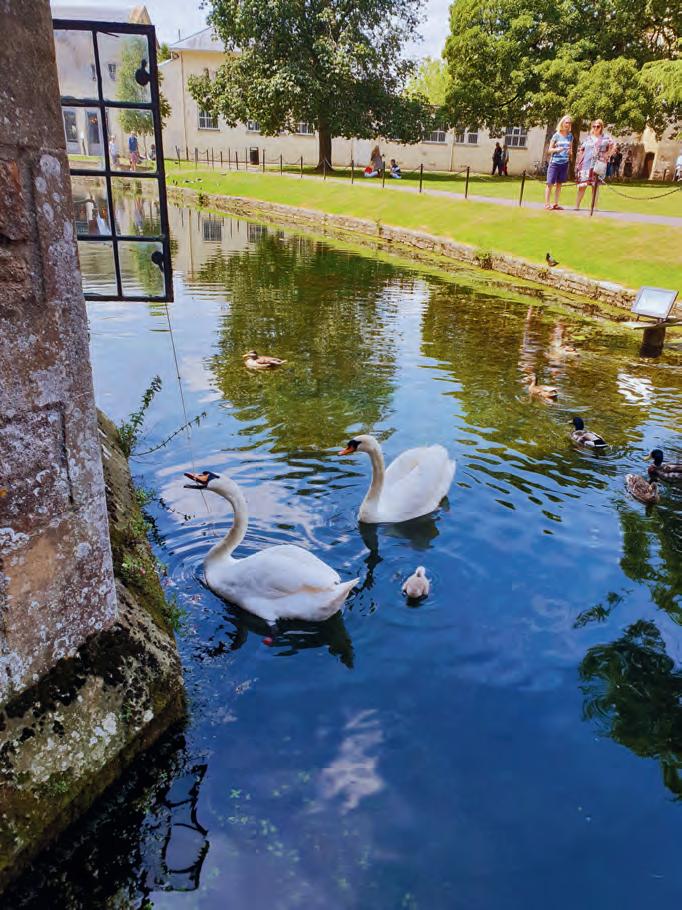






The programme of Rare Plant Fairs continues during July, with events held in interesting and unique gardens with their own individual style, making a visit to one (or more!) of the events a great day out for all gardeners. A fabulous selection of specialist nurseries attends each of the Fairs, all of whom are experts in the plants that they grow.

WINTERBOURNE HOUSE AND GARDEN, Birmingham, Sunday July 13th, 10:30am-5pm. Winterbourne is one of the best surviving examples of an Edwardian Arts and Crafts suburban villa garden. Today, the botanical garden contains plants from around the globe with collections of plants from China, North and South America and the Alpine areas of the world.
MANOR HOUSE GARDENS, Bledlow, Buckinghamshire, Sunday July 20th, 11am-4pm. Bledlow Manor House has been owned by the Carington family since the 18th Century. The present garden covers about 12 acres, and utilises a mixture of different terrain and styles, ranging from a Japanese style water garden on converted old cress beds, a walled kitchen garden, to a contemporary sculpture garden.
Visit www.rareplantfair.co.uk for details of the events, including admission charges and a complete list of the exhibitors attending.
Hartland Abbey has so much to see and do in the summer, come wet or glorious! The house is full of family history, fascinating architecture and quirky family memorabilia. The ‘Malory Towers Quiz’ is fun for children. The film display, included in the garden ticket, is a reminder of the many productions filmed here over the years. Out in the gardens and walks there is so much space for families and dogs to explore the beautiful valley leading from the walled gardens to the sea. Theatre is making a return to the lawns too!
Details at www.hartlandabbey.com 01237441496/234
Taunton will be a buzz in August as the oldest flower show is back for its 194th year. Taunton Flower Show will be opening the gates to Vivary Park on Friday 1st and Saturday 2nd August for two days of entertainment, shopping, eating and fun.
The amazing floral and competition marquees, as well as stunning gardens, built in five days and especially for the show will be one of the main gardening features. The arena is welcoming All Stars Formation riding team, who will be featured on Britain’s Got Talent in 2025, as well as the amazing Paws for Thought and the very popular The BMX Show, an amazing stunt team. There will be lots of musical entertainment, supporting local artists, acts and choirs. Designer Gardens makes a welcome return with multi-award-winning landscape gardener Chris Hull from BBC Garden Rescue, joining the judging panel as well as making an appearance during the very popular Gardener’s Question Time.
Families can enjoy the children’s village with free face painting and entertainment, and children can enter free with a paying adult.
Tickets are now available at a discounted rate. Children 17 years and under are free with a paying adult.
Tickets from www.tauntonfs.co.uk or Taunton Visitors Centre
As a follow up to the main Plant Fair at Longstock, the Hampshire & Isle of Wight Plant Heritage group are making a return late summer visit to Staunton Country Park, Petersfield Road, Havant, PO9 5HD with their autumn plant sale which takes place of Sunday, August 31st between 1pm and 5pm.
Set in a historic estate with a listed Regency landscape that contains parkland and formal gardens, this is an exciting place to visit. National Collection of Lardizabalaceae plants to view. Specialist nurseries and plant heritage plants will be for sale. Refreshments on site. There are no entry charges. Free parking for plant heritage members.
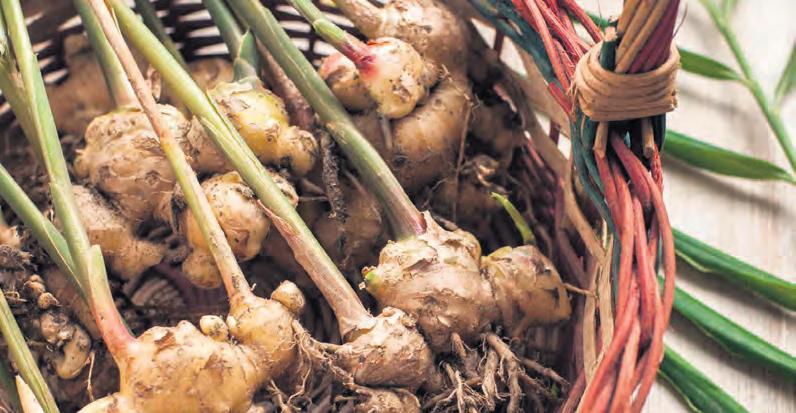
You can successfully grow ginger from a basic shop bought root. It’s fun to do, cheap and very rewarding.
Yes, you can grow ginger in your garden.
If you want to try grow it, it’s best to start ginger indoors or in a greenhouse during the cool months, typically around late winter, or early spring.
Normally, you can grow ginger from a piece of ginger root, which is also called as ‘seed piece.’ Once the risk of frost has passed, you can transplant it outside in a sheltered spot, so that it will receive plenty of sunlight and regular watering. With the right care, you can successfully cultivate ginger, enjoying its unique flavour in your cuisine. It might be called ginger root but it’s technically a rhizome. Ginger grows and spreads underneath the ground. Above ground, ginger plants have lots of leaves that you can harvest and use in teas, tinctures, and salves.
Ginger likes warm, humid conditions and well-drained, fertile soil, so this may require special care for your environment and climate. Ginger is best started indoors in late winter/early spring in the UK, as, although it needs warmth and moisture, the climate can be too cold in the early stages. Once the risk of frost has passed and temperatures are consistently above 15°C (59°F), you can transplant the ginger outdoors. Choose a sheltered spot with partial shade to protect it from strong winds and direct sunlight, which can scorch the leaves.
The ginger that is commonly used in cooking comes specifically from the species Zingiber officinale, which is cultivated for its flavourful rhizome. While there are many types of ginger plants, including ornamental varieties, only this one yields the rhizomes that are suitable for culinary use. So, it important to ensure you are growing the correct species if you want to harvest ginger for cooking.
THE GROWING PROCESS
Select a fresh piece of ginger root from the supermarket that has visible ‘eyes’ or buds. Look for plump, firm roots without any signs of mould or shrivelling.
To prepare ginger for planting, cut the root into segments, ensuring each piece has at least one bud. Allow the cut surfaces to dry for a day or two to prevent root rot.
Use a pot with drainage holes, filled with a well-draining potting mix. Ginger prefers slightly acidic soil, so a mix designed for tropical plants can work well.
Plant the segments about an inch deep, with the buds facing upward. Water lightly to settle the soil but avoid soaking it.
Place the pot in a warm, bright location with indirect sunlight. Ginger thrives in temperatures between 60°F and 85°F (15°C to 29°C).
Keep the soil consistently moist but not soggy. Water when the top inch of soil feels dry. Fertilise every few weeks during the growing season with a balanced fertiliser to support growth.
After eight months, when the leaves begin to yellow, you can harvest your ginger. For young ginger, you can start to harvest after about four months.
Yes, growing your own ginger is rewarding and is often worth the effort.
• Freshness and flavour: Homegrown ginger tends to be fresher and full of flavour.
• Convenience: Growing ginger at home means you can harvest ginger whenever you need it.
• Cost-Effective: While there might be initial costs for planting and care, growing your own ginger can save you money in the long run, especially if you use it frequently.
• Satisfaction: Cultivating ginger is certainly a fulfilling gardening experience.
• Health benefits: Ginger is known for its medicinal properties, and having fresh ginger on hand can encourage you to incorporate it into your diet more often.
by Vivienne Lewis

Rosemary Verey arrived to gardening later in life- she became one of our top garden writers and designers in the 1980s, advising the then Prince of Wales on his garden at Highgrove, and creating a garden for Elton John
A country woman usually seen dressed in tweeds, classic dresses and pearls - that was the photographic image of Rosemary Verey, and as she graciously welcomed visitors to her Cotswolds home, Barnsley Manor in Gloucestershire.
But that is not even half of the story - Rosemary Verey was a lively character who had water skied down the Thames in the 1930s, was a debutante who loved fox hunting, parties and tennis, and brainy too, reading economics and social history at University College, London, at a time when it was unusual for women to go to university.
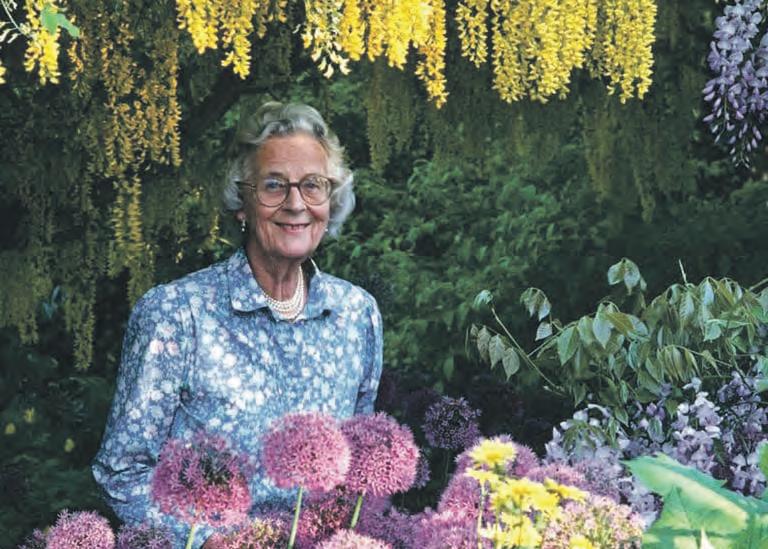
It was only after a serious riding accident in her 30s that she turned to gardening, urged by her husband. A self-taught amateur, by the age of 60 she had produced her first book and tapped into an era of increased home ownership and interest in garden design.
She went on to advise King Charles III when he was Prince of Wales on his garden at Highgrove, and created a garden for Elton John among many highprofile clients.
Her writing featured in magazines and newspaper supplements, followed by several best selling books, then travelling to USA to lecture on garden design. She became one of the most influential garden writers and designers of the 1980s and 90s.
Born in 1918 in Chatham, Kent to a naval family who settled in Northamptonshire on her father’s retirement, Rosemary had a comfortable country life. While a deb she met her husband, David Verey, marrying in October 1939 before Rosemary she took her degree. While David Verey was serving in the Special Operations Executive Rosemary was at home in Fairford in Gloucestershire with their two young sons - and began learning how to garden. After the war two daughters were born, David Verey retired and became a distinguished architectural historian and in 1951 the Vereys took over Barnsley House near Cirencester from David’s father, who with his wife moved into an adjacent converted stable block. Barnsley House was to be Rosemary’s home until 1988 when in turn she moved to the same property, giving Barnsley House to her eldest son, Charles. Like so many other top English gardeners, particularly women including Vita Sackville-
West, Norah Lindsay and Margery Fish, and later, Beth Chatto, Rosemary Verey’s horticultural fame started with her own garden. Once her daughters set off for boarding school, with time on her hands she set about redesigning the garden at Barnsley House. The encouragement of her husband has to be acknowledged: as Harold Nicolson had done at Sissinghurst, designing the framework for Vita Sackville-West to establish her romantic planting schemes, so David Verey provided the framework for Rosemary’s planting.
Percy Crane’s very temporary involvement with the garden at Barnsley House - and the start of a new career
David Verey called in the Arts and Crafts designer Percy Crane to advise on the redesign of their garden. But Rosemary Verey soon dispensed with his services, determined to put her own stamp on the garden, which she was to do for the next 50 years, even after she had moved out of Barnsley House. She worked on the history of the William and Mary house, built in 1697, taking note of Crane’s love of long vistas in the development of the four-acre grounds, adding a Tuscan temple from Fairford Park, transported brick by brick, which was rebuilt at the end of a straight vista, across an ornamental pool through a pair of wrought iron gates to a statue of a hunting lady across the lawn.
An avenue of limes was followed by the much photographed laburnum walk, supported by a metal frame and underplanted with alliums, the vista ending with a frog fountain. Verey, having studied maths, was adept at drawing up precise plans. She designed four parterre beds framing the lawn, off the terrace which was widened. A herb garden was part of the parterre, a practical move as it was near the kitchen.
The knot garden was made to match the historical house. The ornamental potager, based on her historical research, proved to be one of Rosemary Verey’s most influential designs with its box-edged plots of ornamental lettuces, coloured cabbages, and ruby chard, making vegetable growing areas suddenly chic and fashionable. Informality within a formal framework describes her work.
Her garden writing began with articles for gardening magazines including Country Life followed by her first book, in 1980, The Englishwoman’s Garden, a collection of essays by top contemporary female gardeners about their gardens. It has become a classic, followed by The Englishman’s Garden, and it introduced her to an American audience, even more so with The American Woman’s Garden. Rosemary Verey was well connected in society and very much a self-publicist.
Opening Barnsley House for the National Garden Scheme led to being a garden designer
She opened her garden for the National Garden Scheme for the first time in 1970, and regularly after that until it was eventually opening six days a week for thousands of visitors a year. But in the early days it helped her to become well known as a plantswoman/ designer and people began to seek her out to help them design their garden. She developed an increasingly long and distinguished client list, no doubt helped by her connections. She liked to take photos and show clients the project’s ‘before and after’ - as the late 18th/early 19th century landscape gardener Humphry Repton had done in his famous ‘Red Books’.
A hands on gardener, she was an advocate of propagating plants from cuttings and wondered why more people didn’t take cuttings to expand their plants in their gardens. An exacting employer, Rosemary liked things to be ‘just so’ even to tools being hung back on their hooks in a particular way by the gardening staff.

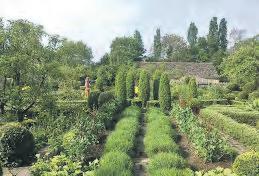

Clients didn’t always take her designs as a permanent part of their garden. She designed a White Garden and a rainbow border for Sir Elton John in his garden near Windsor, but he had the White Garden completely changed without warning. She attended his 50th birthday party dressed as a flower border, in a dramatic response.
She was more successful at Highgrove with the then Prince of Wales, where she advised him on the garden’s style, designed cottage garden spring borders and laid out a thyme walk.
Rosemary Verey was awarded the OBE in 1995, and the Royal Horticultural Society’s Victoria Medal of Honour in 1999. She died at the end of May in 2001 and was buried with her husband in the churchyard at Barnsley. She was highly influential in the garden fashions of the time, with the ornamental potager, the ideas of historical references in garden design, and through her social connections together with her forceful personality, her design work, writing, and lectures, especially in America, she became more acclaimed than other horticultural figures of her time.
For this feature I am indebted to Vanessa Berridge, former editor of The English Garden magazine, now Gloucestershire NGS county organiser, and author of Great British Gardeners (2018, Amberley). Barnsley House is now a hotel.

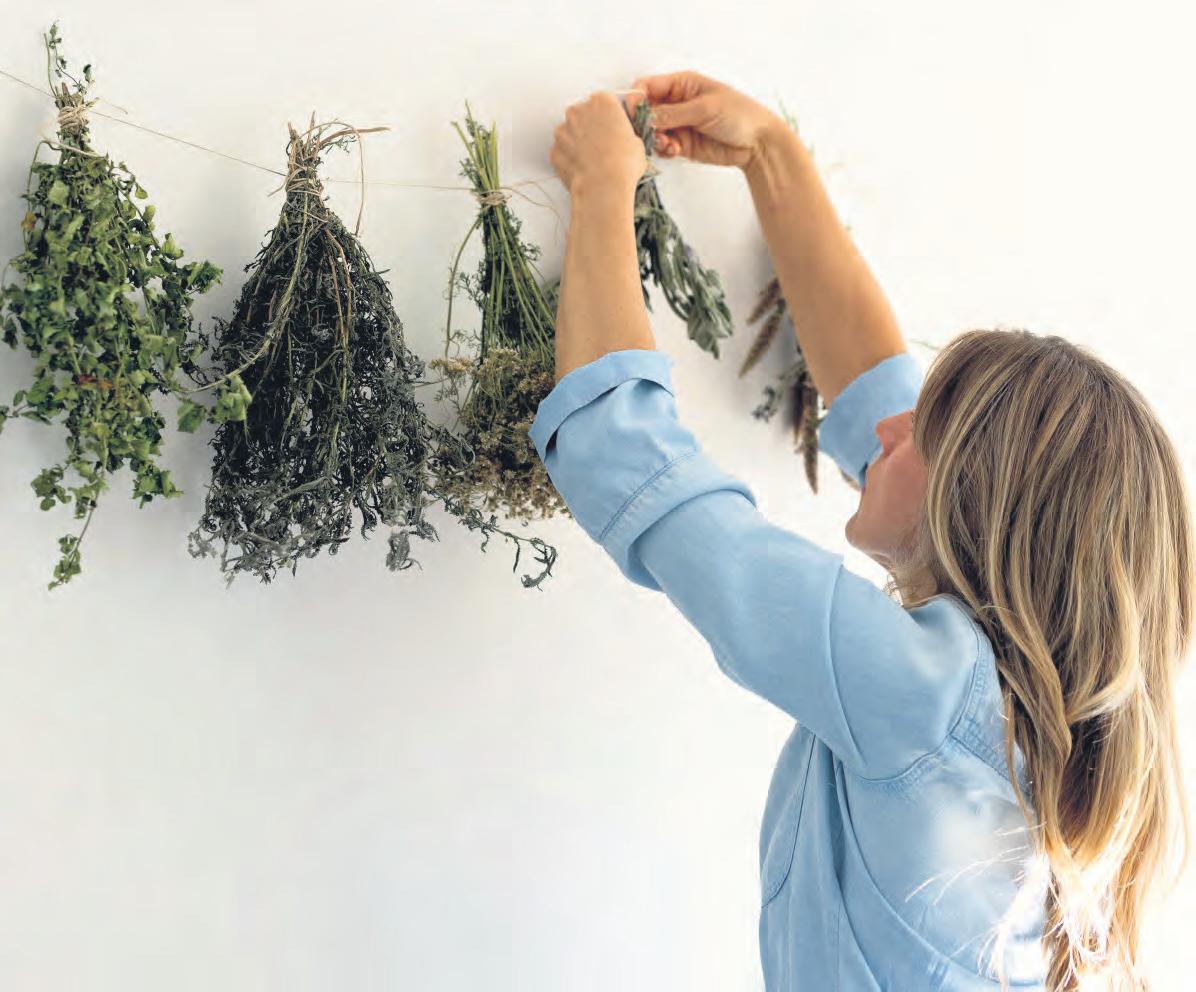
Dorset gardener Amy Bolton has been drying herbs from her small garden for over 20 years and in recent years has managed to get a wonderful harvest
I wish everyone knew just how easy it is to gather herbs from your garden, dry them, and save them for use all year. It’s simple good fun and has lots and lots of benefits in the kitchen and in the home.
Let’s look first at some of my favourite herbs to dry.
This is really drying herbs just like my grandma taught me, the old-school way. I love to follow tradition and make most things at home.
I don’t ever want to lose touch of my home and upbringing, no matter how many fancy tools and equipment are available. You can do this with every single herb imaginable. Basil, thyme, oregano, mint, you name it!
By using this simple method you can enjoy aromatic dry herbs for months. There is nothing that tastes better than homemade, no store-bought herb will ever be this aromatic. Keep in mind that dried herbs are four times stronger than fresh, so less is more in your recipes.
• Gather these bare stems and tie them in bundles with twine.
• Hang these bundles to dry on a clothing line or place on an herb drying rack.
• The key is to dry your herbs somewhere cool, dry, and dark. Light can strip your herbs of that great flavour you’re trying to preserve.
• Herbs with more tender leaves like mint are prone to growing mould if exposed to too much moisture.
How to tell when herbs are dried
Most herbs will be dried out after just one week, but I recommend giving them another two to three weeks to be sure all moisture is gone from the leaves.
Rosemary Verey’s The English Country Garden was published in 1996 by BBC Books to accompany a major TV series, and explored 12 outstanding gardens at different times of the year. The cover shows author Rosemary Verey among the alliums beneath the famous laburnum walk, and the book features, not surprisingly, Barnsley House, and a wide range of well established gardens, from Holker Hall in Cumbria, Helmingham Hall in Suffolk, Chilcombe House in Dorset, Folly Farm in Berkshire (a Gertrude Jekyll survival) and Kiftsgate Court in Gloucestershire. Elton John’s garden at Woodside near Windsor is included, as is the residence of the American Ambassador, Winfield House, Regent’s Park in the centre of London. There are fine photos as in her other books, and planting plans of ten of the gardens, together with helpful information on the (then) openings. One of the loveliest colour plates is of the knot garden at Barnsley House, the interlacing patterns of the box hedges delineated by frost on a crisp winter morning, which she describes as a true lover’s knot coming from a book of 1664. It is a lasting image of Rosemary Verey’s sense of garden history.
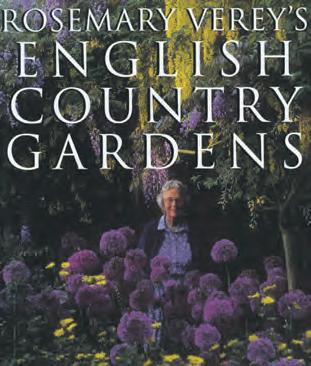
The best herbs to dry
I dry bundles of these herbs to use their fragrant flowers and/or leaves in the kitchen or in dried floral arrangements around the house:
• anise hyssop
• calendula
• chamomile
• lavender
• lemon balm
• mint
• oregano
• rosemary
• sage
thyme
Sage is a standout for its ability to hold its fragrance when dried.
Here’s how to dry herbs by hanging them:
• Harvest herbs from the garden.
• Wash them to remove any dirt and debris.
• Give them a spin in a salad spinner or pat them gently with a towel to dry.
• Remove lower leaves from the stems so that you have about an inch and a half of bare stems at the bottom of each sprig.
You’ll know your herbs are fully dried and ready to be stored when they have that nice, crunchy texture. The stems should feel brittle and easily crack if you bend them; if they’re flexible to your push at all, that’s a sign there’s still moisture left in the herb.
When properly dried, leaves will often crumble when rubbed. For roots and barks, if they are brown, shrivelled, and feel dry, cut several pieces to make sure they are dry all the way through. If so, they are ready for storage.
When your herbs are thoroughly dry, they are ready to be prepared for storage. Plan to store your dried herbs in well-sealed glass jars in a dark cool area. A cupboard or even boxes under your bed are all viable options. I keep the bulk of my herbs in a cupboard and bring out small quantities for daily use in cooking. Also, remember to label your jars with the name of the herb and the date it went into the jar.
If you’ve been spending much time in the garden recently you will be aware of what hard work it has been. Really hot weather in early summer has been making things even more difficult and demanding. One key area to get the right accessories has been in borders where more than ever plants need to be supported to show themselves off. Climber support systems are essential and very underrated for encouraging plant growth and creating beautiful borders displays. Options include trellis, wires, and other structures that provide a framework for the plant to climb and spread. These supports not only guide the plant’s growth but also help to create a structured and visually appealing garden element. Too many gardeners invest hours in getting plants to perform in their borders only to see them crash to the ground without support. All climbers, whether twining or attached by aerial roots or pads, benefit from initial training and pruning. Typical examples include clematis, ivy, honeysuckle, akebia and Russian vine.
If you are trying to train against a wall, make sure you have put up support wires first. Plant about a foot from the base of the wall, so that it has room for root development and will catch the rain. Then untwine the climber from any canes sufficiently to allow you to spread out the stems, but leave them still attached to their cane supports. Select three bamboo canes to train the climber at an angle up to the wire supports on the wall.
After you have trained the main stems into a basic fan shape, you can use secateurs to prune off any weak or twiggy growth that doesn’t contribute to the main framework. The end result is a well-planted climber.
Generally. There are so many products lined up now to take off the hard physical work in the garden that most of us would be crazy not to seek help. And then there’s the opportunity of when shopping around to treat ourselves to a little luxury so when it comes to gardening it is not all hard work and no pleasure.
At Country Gardener we are always on the loot out for great products and fresh ideas so here’s a few to help take the strain.
You must control your shrubs and climbers over the next few months if you want the best displays in borders. Not doing so will ruin the look of many wonderful plants left to collapse and never be able to show off their best looks. The most efficient and professional way is using Rivelin Glen Products which have been uniquely designed through Wire Anchors. They are quick and easy to attach to concrete posts without drilling) to act as an ‘eye’ by threading wire through them to create a trellis system. The Gripping Trellis System is ideal to use with the anchors as the wire does not stretch, takes up to 100kg load with one length of wire and two tensioners. So, this means an end to sore hands and sagging wires. Rivelin Glen Products are the main stockists of he Gripple Trellising system. Price: Wire Anchors from £10.50 for a pack of three. Starter Kit £20.25.
Details available at: www.rivelinglenproducts.com Email: info@rivelinglenproducts.co.uk Tel: 01246 462666




Somerlap offers a wide range of natural high-quality garden products that are both competitively priced and built to last. Their timber is sourced sustainably with many of the products proudly made in Somerset.
Since 1991 they’ve been crafting their own quality garden products at a five-acre site in Mark. Alongside own creations,they carefully select and stock complementary garden products from trusted manufacturers.
As a fully employee-owned business, they are dedicated to providing exceptional customer service and aftercare. A knowledgeable team is also on hand to offer advice and help design bespoke outdoor living solutions tailored to your needs. Wells Road, Blackford Rd, Mark, Highbridge TA9 4NR Tel: 01278 641671 www.somerlap.co.uk
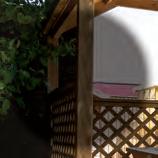





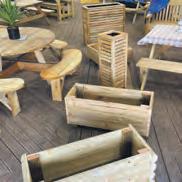
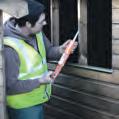
Twelve questions to test your knowledge
1. Which best-selling author was appointed president of the Campaign to Protect Rural England?
2. The Rosebay Wiilowherb has another name which relates to how it was found on bomb sites. What is it?
3. Wittern, whiggen and quickbeam are west country dialects for which tree?
4. In English folklore a tod is a traditional name for which animal?
5. Which aromatic herb gives the distinctive flavour to Earl Grey tea?
6. Which flower is known as Poor Man’s Weather and Scarlet Pimpernel because its scarlet flowers usually open at 8am and close about 3pm?
7. One popular plant is claimed to prevent a drunkard from drinking. What is it?
8. According to folklore which nut placed in your pocket prevents rheumatism?
9. How does this quotation continue; ‘ The best place to seek God is in a garden.’
10. There are many varieties of poppy grown in our gardens but which one is notorious for its narcotic properties?
11. Roses are soon damaged by greenfly but there is one herb which can help as a companion plant. Which is it?
12. Which well known herb when found flourishing in a garden is said to indicate that the lady of the house is in charge?

BLACKBIRD
BLACKCAP
Our popular gardening themed crossword is compiled by Saranda which over the past year has become enormously popular with readers. The winning entry to be drawn by us will receive £100 of RHS gift tokens. Completed entries should be sent to Mount House, Halse, Taunton, Somerset TA4 3AD. Closing date Friday 25th July. The May issue winner was Pauline McFadden, Bridgwater.
10. Papaver somniferum, 11. Chives 12. Rosemary
8. Nutmeg, 9. ‘You can dig for him there’ -G.B. Shaw,Mr Tod, 5. Bergamot, 6. Anagallis arvensis, 7. White Heather,
QUIZZING DOZEN:fox as in Beatrice Potter’s Tale of 1. Bill Bryson, 2. Fireweed, 3. Rowan or Mountain Ash, 4. A
ACROSS
1. A prominent Canadian symbol representing their national tree (5, 4)
6. Having a frame or structure of latticework (9)
11. The female organs of a flower comprising the stigma, style and ovary (6)
12. A young branch or sucker in botany (5)
13. More than one fried egg flower? (8)
14. An air letter (10)
15. Prunus dulcis, known for its blossom and nuts (6, 4)
17. Amazon tree that yields a milky juice (10)
20. "The _______ and crooked cedar knees"Longfellow's "The Building of the Ship" (7)
22. A clarified butter used in Indian cooking (4)
23. Popular fruit that won first prize in a competition in 1885 (10, 5)
26. An agave plant used for intoxicating drinks (6)
28. Canvas sheets used to keep the sun or rain off a shop window (7)
29. Genus of plants to which the stinging nettle belongs (6)
30. Gave the game away by upsetting the vegetables! (7, 3, 5)
31. A tropical African tree which bears oily nuts (4)
33. Sour or bitter (7)
34. A device used in heraldry meaning flower of the lily in French (5-2-3)
36. To censure or reprimand (10)
37. Taberaemontana crassa (5, 5)
40. A tree endemic to Easter Island within the Sophora genus (8)
42. A small New Zealand tree, Melicytus ramiflorus (5)
43. To preserve a corpse from decay using chemicals (6)
44. The state of having cracks or chinks (9)
45. The false rhubarb (9)
DOWN
1. A cereal plant that yields sweetcorn (5)
2. The stalk of a leaflet of a compound leaf (9)
3. A grasslike flowering plant of the pondweed family (8)
4. Where Rose of England won the Oaks? (5)
5. One of the three main herbs used in making absinthe (8, 6)
6. Common name of Hypericum androsaemum (6)
7. The seed-bearing head of a cereal plant (3)
8. Having the characteristics of a specific type of legume fruit (12)
9. A line of trees or shrubs planted to protect an area of crops (11)
10. The culmination of a road with no exit (4, 3)
16. To be incoherent or impossible to understand (4, 2, 5)
18. A pile or mound of burnt waste (3, 4)
19. A list of proper names of people and places often with etymologies (11)
21. Common name of Amaranthus hypochondriacus (7, 7)
24. A garden featuring large stones with plants growing among them (7)
25. The fruits of the genus Sambucus (12)
27. A tall North American herb, Veronicastrum virginicum (7, 4)
31. Jasione montana or blue bonnets (6-3)
32. A genus of bulbous flowering plants in the family Asparagaceae (8)
33. Common name of creeper Glechoma hederacea (7)
35. Himalayan balsam or policeman's ______! (6)
38. Genus to which oats belong (5)
39. Syringa is the genus to which this popular plant belongs (5)
41. John Keats wrote one to a nightingale (3)
All ponds will attract wildlife, but there are several easy ways to make a new or existing pond even more wildlife friendly. And that is the aim with most gardeners.
The larger the pond, the more wildlife it will attract. But size isn’t everything – even a mini pond in a pot will provide a habitat and water source for plenty of small creatures. Ideally, aim for a depth of eight inches to two feet which varies across the pond, as this will suit the majority of pond flora and fauna.
A pond doesn’t just work in isolation, it’s part of a network of habitats around your garden. Help wildlife move between these areas by letting grass grow along one edge of the pond (tall grass gives perfect cover for young toads and frogs leaving the pond), growing some denser shrubs nearby (so birds can approach the pond safely, with cover from predators such as sparrowhawks) and keeping at least one section of the pond edge open and sunny to allow for basking reptiles such as grass snakes.
If your pond contains fish, chances are it will also have a pump and filter system, to help keep the water clear. A wildlife pond doesn’t need a filter, but you may wish to keep the pump, to run a cascade or fountain, for instance. Just make sure the pump has a ‘wildlife protection system’ to prevent tadpoles and other small pondlife being sucked into it.
Water features enhance any garden, providing ornamental interest, soothing sound and a habitat for wildlife. And don’t forget, a pond is not your only option – wildlife will make use of all kinds of water features in a garden, from a simple bird bath to a rain garden.
Adding a garden water feature needn’t cost a fortune. Something as simple as an attractive garden water bowl can make a real impact, reflecting light and neighbouring plants. Calming trickling sounds can be generated by a rill or fountain, while a pond will allow you to grow aquatic plants and provide a home for newts, frogs and dragonflies.
Water rills are shallow channels that provide a flow of water from one area to another. Their flow provides a constant tranquil noise, and they can suit any garden.
Pouring jug water features such as a terracotta olive jar have a romantic, classical feel to them. Purpose-made jugs with a hole for the pump to discreetly slot into are easy to find and they can be either be free-standing features that pour into a bowl, or used as a starting point for rills, pouring into a pond or even a swimming pool.
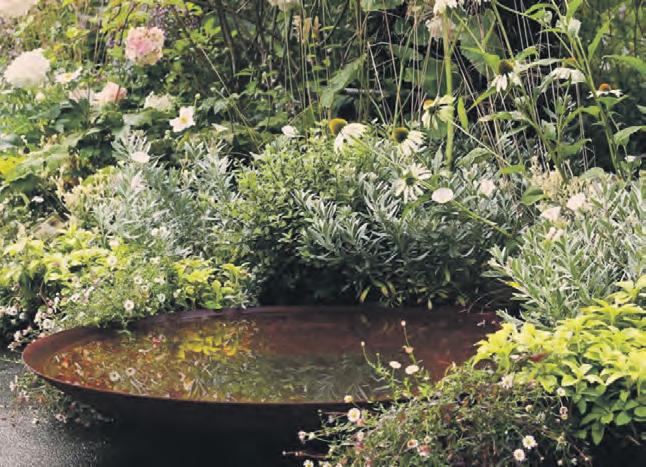
In every season, a pond adds something special to your garden — not just in appearance, but in how it makes you feel. Water brings stillness in summer, reflection in winter, and moments of calm all year round.
It’s a simple addition that opens the door to nature. Whether you’re drawn to a peaceful wildlife haven or a striking water feature, a pond can transform your garden into a place of beauty and connection.
And with OASE, creating your own pond is easier than you might think. From pre-formed ponds to filters, pumps and expert advice, we have everything you need to get started.
If you’ve been dreaming of adding a pond, now’s the time to explore what’s possible.
Build once. Enjoy forever.
BE INSPIRED: oase.com/gb-en/lifestyle/small-water-worlds.html’
A POND BRINGS BEAUTY, CALM AND CONNECTION – THROUGH SPRING, SUMMER AND BEYOND.
A pond adds real value – not just in how your garden looks, but in how it feels. From peaceful moments in spring to quiet reflection in winter, water creates a space you’ll enjoy all year round.
With OASE, building your own pond is simple. Our high-quality products and expert guidance help you create something built to last – and made to enjoy.
Build once. Enjoy forever.

Scan and learn more today. 01256 896 886 enquiries@oase.com www.oase.com/gb-en/lifestyle/diy.html
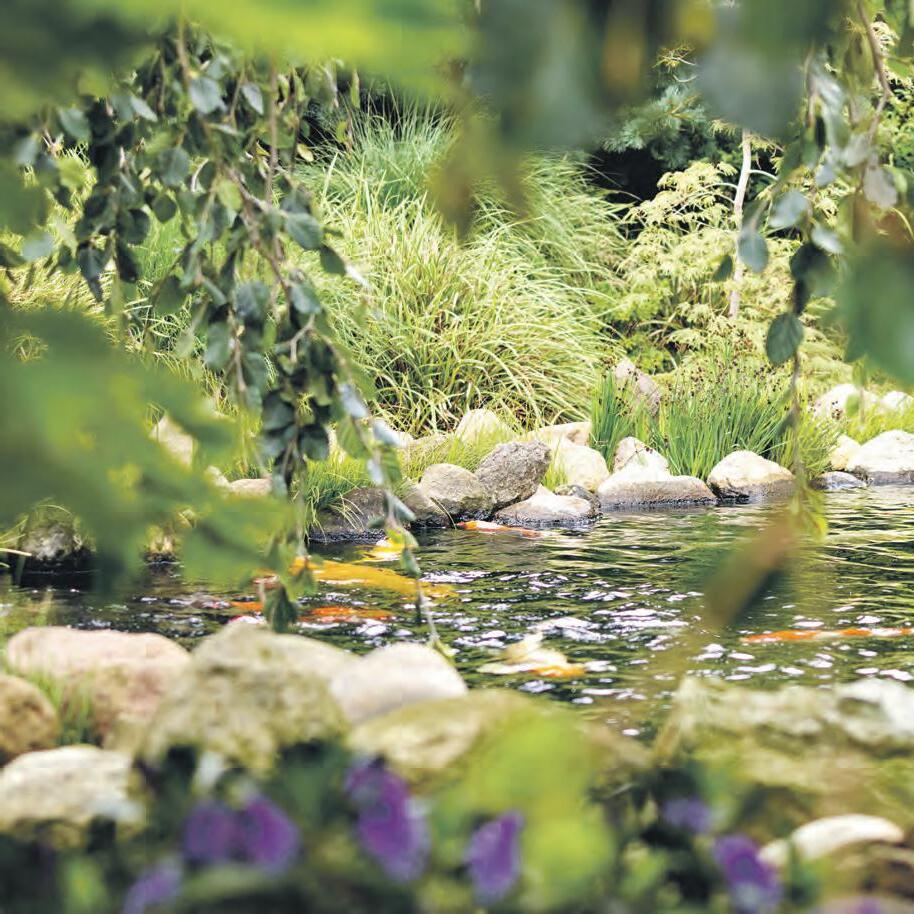


For the latest garden news, events & advice - don't miss

Pensioner Julia Daniels has in the past ten years found the wildlife in her Devon garden an inspiration and joy and has found ways to help the wildlife thrive
As I have grown older, I have tried to discern the thing or things which truly bring me joy. One of those things is simply seeing life in my garden.
I don’t mind that it is not neat and tidy all the time. It is more important it is busy with life. Everyone has an idea of what their garden should be. I am a committed enthusiast for making it as wildlife friendly as I can.
Many of us are lucky enough to have green spaces on our doorstep, too, home to bustling birds, bees, and butterflies, but also hedgehogs, squirrels and it is an endless joy. I have lived on my own now here in Devon for the best part of ten years and it has been my garden, along of course with family and friends which has given me joy for life. I’ve learned how to do things and I suppose my gardening philosophy is mostly to leave things alone as much as you can.
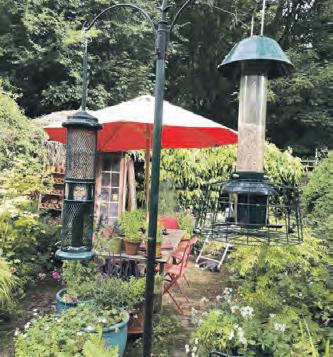
Birdfeeders are such a joy in the garden and every day of the year, and I just couldn’t be without them. Yes, I know bird feeders make a bit of a mess on the ground but the little birds soon mop up the bits and pieces. Rats have been a problem in the past in the garden, but I haven’t seen any for a couple of years so maybe they just keep themselves to themselves’ As I feed them day after day, I keep a list of who likes what:
Finches favour berry cakes
Goldfinches favour seed
Starlings favour peanut cake.
Blackbirds and thrushes favour over-ripe
apples, raisins and other fruits.
Nuthatches, sparrows and finches favour sunflower heads. Wrens and small birds favour chopped animal fat and grated cheese.
Foxes romp through the borders and squash things flat when they have a snooze in a sunny spot. They have preferred routes around and through the garden and I love seeing them sleeking around. They often knock down plants in their path, but I have decided not to mind.
I have decided to welcome dandelions up to a point and no see them as a problem to that saves the worry about weeding. If I see too many, I sometimes just snap the flower head off. I like the colour and we can always decide how many we want.
Mail order plants arrive in a box of straw so rather than discard it I stuff the straw into pots and leave them tucked around the edges of the lawn to make bug homes.
I have a back corner to the garden where I chuck all green matter including flowers from the house, cardboard and everything cut or pruned. The pile just sits there cooking away and being eaten and decomposed by bugs. I don’t use it for compost -it’s more a living pile adding to life in the garden. Gardening is a state of mind. As a place I see a garden we have to share rather than somewhere we have to battle to keep control of all the time.
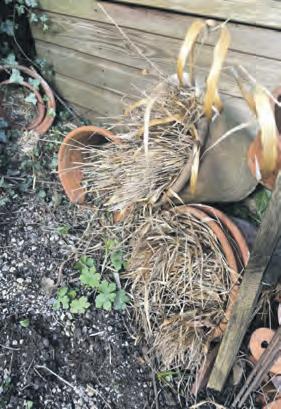
compiled by Vivienne Lewis
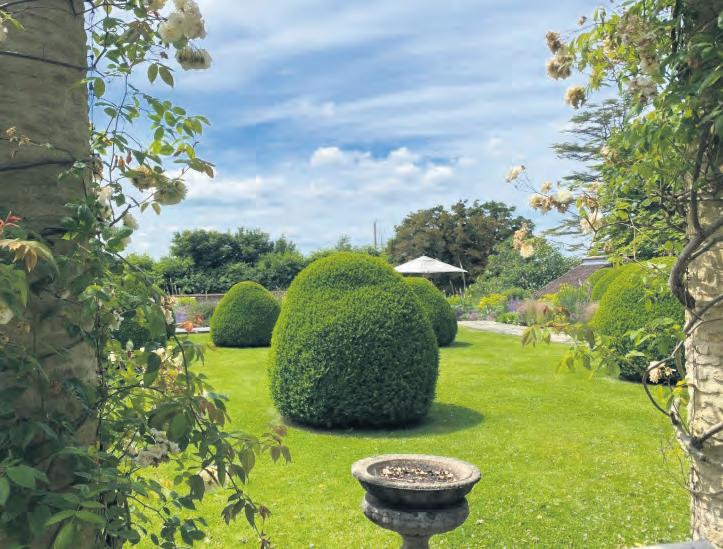

It’s high summer - and high time to get out to enjoy other people’s gardens while helping to raise much needed funds for nursing and caring charities, so here’s a varied selection from the areas covered by Country Gardener. We advise checking wherever possible before starting out on a journey as circumstances can force cancellations of openings in private gardens. www.ngs.org.uk
Ryall, Bridport, Dorset DT6 6EN
Is another new opening for the NGS on Sunday 13th July from 12pm until 5pm, a naturalistic garden of about an acre surrounding the house, stunning views of Marshwood Vale and beyond, with a gravel garden, wildflower meadow and borders filled with irises, geraniums, herbs, grasses and roses. A tributary of the River Char winds under the bridge to the orchard; 11 acres including woodland path, orchards with fruit and nut trees and larger wildflower meadow. Admission £5, children free.

Woodville, Stour Provost, Gillingham, Dorset SP8 5LY
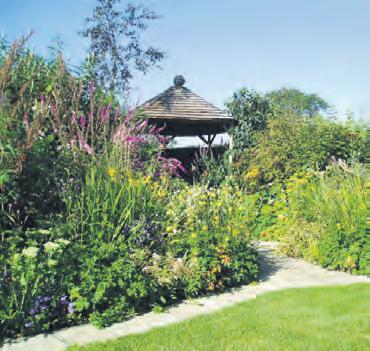
Opening for two weekends in July for the NGS (19th/20th and 26th/27th, also Sundays 10th and 17th August), a gorgeous riot of colour and scent, the old thatched cottage barely visible amongst the unusual annuals and perennials alongside traditional and familiar flowers, making a fine display attracting an abundance of wildlife. Always something new, now a unique, gothic garden loo. Open 2pm-6pm each open day. Admission £4, children free.
Studland, Swanage, Dorset BH19 3AJ
A new opening for the NGS on Saturday 12th and Sunday 13th July from 11am until 4pm each day, is a coastal cottage garden, close to Old Harry Rocks, located in a quiet leafy lane in the beautiful village of Studland, lovingly restored and developed over the last ten years, including a kitchen garden, areas of lawn surrounded by herbaceous borders, roses and flowering shrubs, old stone pathways, an old bothy, fernery, shrubbery, orchard and small
Long Lane, Cucklington, Wincanton, Somerset BA9 9QL
A new opening for the National Garden Scheme on Saturday 19th July, from 10am until 4pm, is a beautiful five-acre formal garden set in 100 acres of parkland and wildflower meadows, originally designed by Tom Stuart-Smith, a collection of rooms with a walled garden, cut flowers, vegetable garden, bulb meadows, large pot displays and a glasshouse. A long lime avenue and apple orchards surround the elegant house. Admission £8, children free.



Westhill Lane, Bason Bridge, Highbridge, Somerset TA9 4RF on Saturday 12th July, also the weekend of 26th and 27th July, from 2pm until 5pm each day, is a 1½ acre plantsman’s garden on the Somerset Levels, gradually created out of fields surrounding an old farmhouse over last 30 years and still being developed, with several interconnected areas. Trees, shrubs and herbaceous perennials planted for form, foliage and shape in big flowing borders. Admission £8, children free.
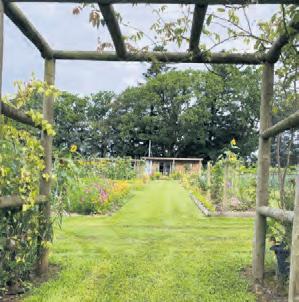
Ashwater, Beaworthy, Devon EX21 5DL
Another new opening for the NGS on Saturday 12th and Sunday 13th July, 11am-4pm both days, the garden has been in development since 2020, divided into two main areas: a vegetable plot with traditional gardening methods plus elements of permaculture and no dig, and a more naturalised garden with a small woodland walk, pond area, apple orchard and wildflower meadow. Admission £5, children free.
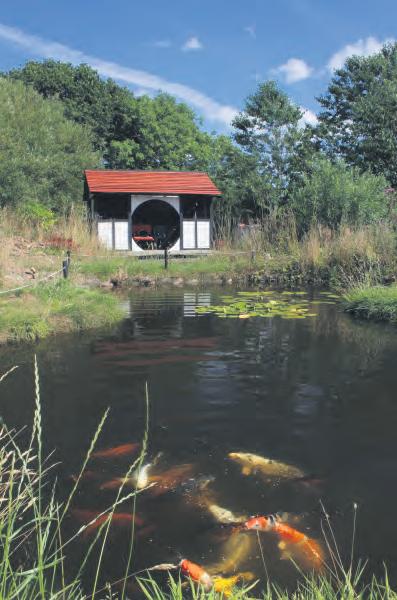
Sheepwash, Beaworthy, Devon EX21 5PE Opens for the NGS on Friday 18th, Saturday 19th and Sunday 20th July from 11am until 4.30pm each day, an acre of naturalistic/ wildlife/ plantsman’s sensory garden on a sloping site which is autism friendly, with rare and unusual plants,13 ponds with koi and lilies, stream, a Japanese garden, a Mediterranean garden, wildflower meadow, rhododendrons, acers, hydrangeas, grasses and bamboo. There’s even clock golf! Admission £5, children free.
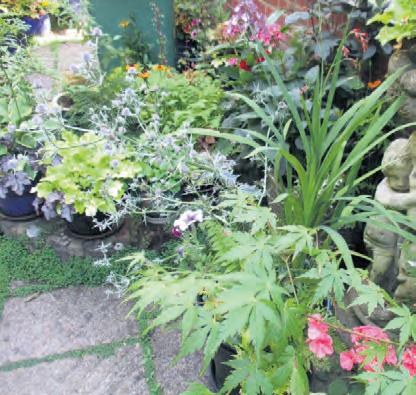
Longstock, Stockbridge, Hampshire SO20 6DW
Opening for the NGS on Sunday 20th July, also Sunday 7th September, 2pm-5pm each open day, a garden for all seasons, developed over 55 years into a profusely planted, contemporary cottage garden in peaceful surroundings with a constantly changing display in pots, and many unusual plants. Admission £5, children free.
Charlton Kings, Cheltenham, Gloucestershire GL53 9BS
A new opening for the NGS on Sunday 27th July, from 1.30pm until 5.30pm, is a 1/3 acre shady garden on dry sandy soil with flowering trees and borders planted within the last three years; a variety of foliage plants, raised stone beds round the patio with alpines and smaller bulbs; wisterias and climbers clothe two pergolas with seating areas. Admission £4, children free.


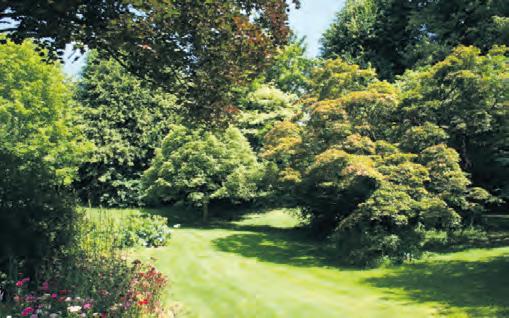
Free Street, Bishops Waltham, Southampton, Hampshire SO32 1EE
Two gardens opening for the NGS on Saturday 19th and Sunday 20th July, 1pm-5pm each day, in the medieval market town. Albion Cottage is wildlife friendly with a courtyard full of planted ceramic pots, a patio and cottage style side garden with a deep fish pond, paths made from reclaimed paving. Bishop’s Waltham in Bloom, 1st prize for ‘Best Display in a Private Residence’. 9 Colville Drive has an illusion of space by a zig-zagging path that reveals shaded spots hidden from the house’s view; a stream tumbles from rocks between two ponds attracting a variety of wildlife; vivid colours from climbing plants, shrubs, dahlias, and begonias. Admission £5, children free.

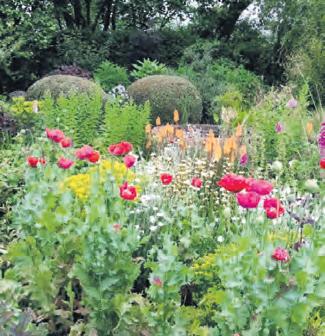
Kempley Dymock, Kempley, Dymock, Gloucestershire GL18 2BU
Opens for the NGS on Sunday 20th July from 1pm until 5pm, a four-acre wildlife friendly garden with views borrowed from open countryside. Mature native and specimen trees together with ornamental borders, rose garden and cottage gardens can be explored from the large connecting lawns; ponds, productive apple orchard, woodland, wildflower meadows, ancient horse chestnut. Seasonal floral interest from annual and perennial planting. Admission £5, children free.
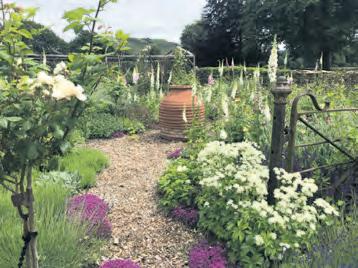
Corsley, Warminster, Wiltshire BA12 7QH
Opening for the NGS on Sunday 27th July, from 11am until 5pm, a garden full of surprises to reflect the eclectic nature of a Georgian home with a secret Jacobean facade. A unique sculpted wave lawn and an exceptional walled garden, many well preserved ancient outbuildings including a potting and apple storage shed and a granary built on staddle stones. All gloriously overlooking the National Trust’s Cley Hill. Admission £10, children free.
Preshute Lane, Manton, Marlborough, Wiltshire SN8 4HQ
Opening for the NGS on Sunday 27th July, 2p-5pm, three contrasting gardens in a picturesque village. Peacock Cottage has sweeping lawns with large colourful herbaceous beds, rose bed, mature trees, parterre, wildflower area and an exotic bed making a lush, tropical oasis. Greentrees has an eclectic mix of herbaceous and shrub borders, trees, raised flower bed and secret seating areas. The Old Post Office is a thatched house with a contemporary and pretty small courtyard, a raised flower bed and private seating area. Combined admission £10, children free.
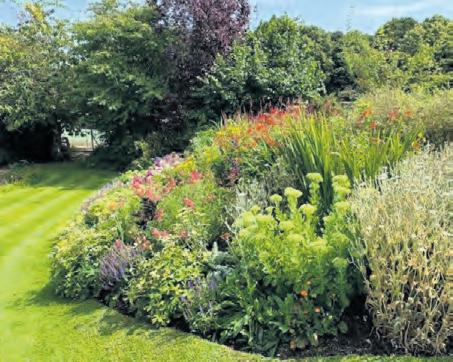
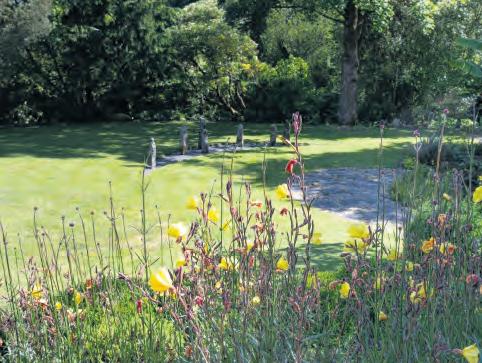
St Keyne, Liskeard, Cornwall PL14 4RN
Opening for the NGS on Sunday 13th July, 2pm-5pm, set in two acres on a hillside, the rump of a former dairy farm developed over the past 30 years, part parkland, part ‘plantsman’ in style, featuring a wide variety of trees, shrubs and perennials, informally divided into a number of themed beds. Admission £5, children free.
Tomlow Road, Napton, Southam, Warwickshire CV47 8HX
Opens for the NGS every weekend in July, August and September, 10am-4pm each day.
Clay soil can be challenging but here’s an acre of garden with an exciting range of plants thriving in hostile conditions. Grass paths round borders filled with many unusual plants, a pond and bamboo grove complete with panda! A peaceful haven for wildlife and visitors. Admission £3.50, children free.
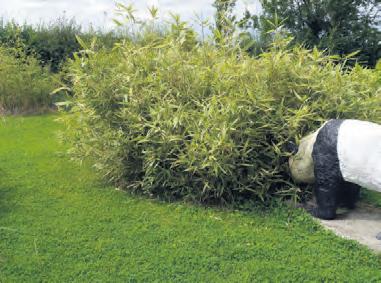
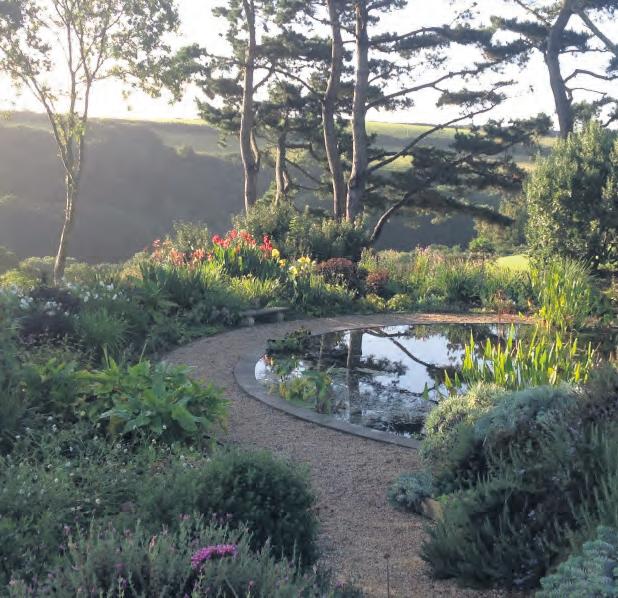
Ivington Green, Leominster, Herefordshire HR6 0JN
Ruan High Lanes, Truro, Cornwall TR2 5LJ
Opening for the NGS on Sunday 13th July from 11am until 5pm, a two-acre garden, substantially relandscaped and planted; a wooded bank drops down to a walled kitchen garden and hot garden. In front, sweeping yew hedges and paths define oval lawns and broad mixed borders. On a lower terrace, a large pond with exotic flowering trees and shrubs. Admission £5, children free.

Welcome to our July Time off and details of gardening club and association events and meetings over the next few weeks throughout Devon. This is a free service in Country Gardener and if you would like to take advantage of it and give events some publicity then email details to us at editorial@countrygardener.co.uk
28TH/29TH
Oakdene CHARITY PLANT SALE 11am - 5pm. Email: amselling@yahoo.com 29TH
3 Drewsmead, Old Town Hill, Ilsington, Newton Abbot TQ13 9RG OPEN GARDEN IN AID OF ROWCROFT HOSPICE www.rowcrofthospice.org.uk/events
Strangeways, Lawn Drive, Chudleigh TQ13 0LT OPEN GARDEN IN AID OF ROWCROFT HOSPICE www.rowcrofthospice.org.uk/events
Marldon Gardening Club ‘YOUR GARDENING QUESTIONS ANSWERED’ - CLIVE BURTON 2ND
Brixham Horticultural Society MONTHLY MEETING Details on 01803 842121 3RD
Plympton Gardeners Association ‘BEES AND HONEY’ - MARK GRIEVES Teignmouth Gardening Club ‘ADVENTURES WITH FANCY FOLIAGE’ - JULIAN SUTTON Email: lenasalter@gmail.com 5TH
Goodleigh Horticultural Society OPEN GARDENS 1PM. £5 per person, under 16s free Refreshments available
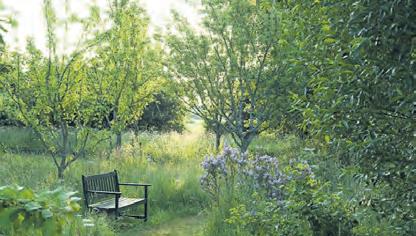
Opening for the NGS on Wednesdays throughout July (2nd, 9th, 16th, 23rd and 30th) also in August, September and October, see NGS website above. A wide range of plants, blending with the countryside and providing wildlife habitat, the cottage surrounded by borders, raised beds, trained pear trees and containers; paths lead to the wider garden with mixed borders, vegetables framed with espalier apples. Admission £5, children free.
Seaways, 12 Oxlea Road, Torquay TQ1 2HF
OPEN GARDEN IN AID OF ROWCROFT HOSPICE www.rowcrofthospice.org.uk/events 8TH
Exminster Gardening Club ‘PELARGONIUMS’ - BRIAN CARLSON Details on 07749 726497
9TH
Nailsea & District Horticultural Society ‘MAKING THE MOST OF YOUR GREENHOUSE’ - NICK MORGAN Details on 01275 855342
16TH
Torquay and District Gardening Club ‘FORAGING’ - IAN LYCETT-KING Email: nickibaker222@gmail.com
19TH
Two Pips, 19 Fluder Hill, Kingskerswell TQ12 5JD OPEN GARDEN IN AID OF ROWCROFT HOSPICE www.rowcrofthospice.org.uk/events
31ST
Budleigh Salterton Garden Club MONTHLY MEETING ‘MUST HAVE PLANTS FOR THE GARDEN’ - PETER CANTRILL Details on 01395 445840
Exmouth Garden Club GARDENERS QUESTION TIME

Are you part of a garden club or society?
Please send us your diary for the year - we’d love to include your talks and shows
Send them into us by email giving us 10 weeks notice of the event: timeoff@countrygardener.co.uk or by post to: Mount House, Halse, Taunton, TA4 3AD.

South Devon Lodge on Farm
Sleeps 4. Central for beaches, Salcombe and Dartmouth.
For availability Tel 01548 853669 www.marymillsfarm.co.uk
Secluded cosy cabins & lodges in wooded valley running down to Wembury Bay & SW Coastal Path

Plymouth, Dartmoor & lovely South Devon Villages & Towns in easy reach. Pets Welcome. Forest School. Tel: 01752 862382 www.churchwoodvalley.com
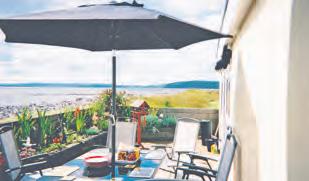
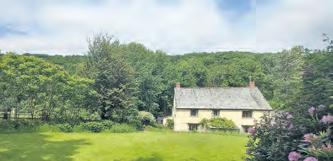
Devon Traditional Cottage Sleeps 2-4 On small farm with private woodland walks for you & your dog to enjoy. RHS Rosemoor approximately 13 miles. Tel: 01769520266 www.horrymill.co.uk Email: horrymill@aol.com
WYE VALLEY/FOREST OF DEAN. Fully equipped single-storey cottage with two en-suite bedrooms. Wi-fi.Recently awarded Visit England 4-star GOLD. Rural retreat, shops/pubs one mile. Enquiries welcome. AS SEEN ON ESCAPE TO THE COUNTRY! Tel: 01594 833259 www.cowshedcottage.co.uk
NORTH DEVON S-C accommodation close to RHS Rosemoor. Sleeps 2-3. Modest rates. www.beehivecottagebeaford.com Email: beehivecottagebeaford@gmail.com
RYDE COTTAGES, ISLE OF WIGHT. Sleep 2 and 4. Close to beach and town. 02380849565. rydecottage@talktalk.net www.rydecottage.co.uk

holiday cottages on an 18th century Estate on the Gower Peninsula with beautiful Grade I listed historic park and gardens. Tel: 01792 391212 www.penricecastle.co.uk

Gloucestershire Quality Bungalow B&B
Ensuites, rural, large garden, paddocks, sheep and fruit. Ideal Cotswolds, Malvern’s, Forest of Dean, cycle storage, ample parking, Wi-Fi £44 p.p.p.n. Tel: 01452 840224 sheila.barnfield1960@gmail.com

A range of over 200 greetings cards and prints from the flower paintings of ANNE COTTERILL We sell to both individuals and trade. No order too small. Contact us for your free catalogue.
Mill House Fine Art Publishing, Bellflower Gallery, Market Place, Colyton, Devon EX24 6JS Tel. 01297 553100 info@millhousefineart.com www.millhousefineart.com

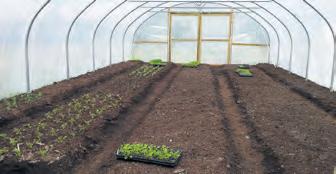



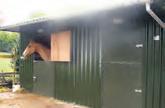
jonne@jonne.co.uk 07770 720 373
BOSWORLAS, ST JUST. Cosy Cottage sleeps 2-4. Please email info@bosworlas.co.uk for availability
GLORIOUS NORTH DEVON. Only 9 cosy caravans on peaceful farm. Wonderful walks in woods & meadows. Easy reach sea, moors & lovely days out. £125-395pw. Discount couples. Nice pets welcome. 01769 540366 www.snapdown.co.uk
Carmarthen Bay South Wales Seafront chalet situated on estuary. Sleeps up to 6. Seaview. Well Behaved Dogs Welcome Free of Charge. Free WIFI. Open from 1st March - 31st Dec. For Brochure Tel: 01269 862191 Near Stratford-upon-Avon
ACCOMMODATION HOLIDAY
COTTAGES
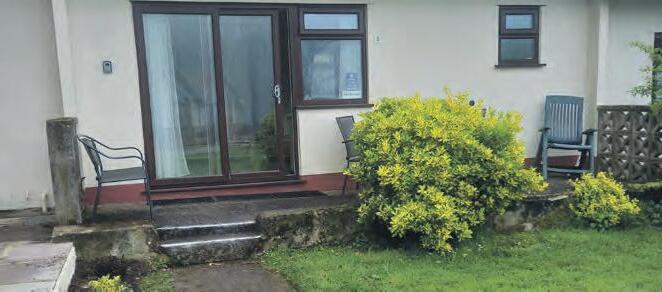
October.
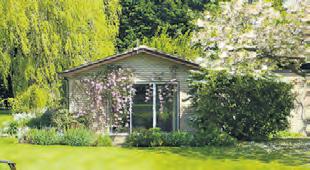
Lovely self-catering cottage in peaceful location: large garden. Sleeps 2. Perfect for famous gardens, NT properties & Cotswolds. Tel: 01789 740360 www.romanacres.com
ACCOMMODATION WITH BEAUTIFUL GARDENS
NORTH DEVON NEAR CLOVELLY. 3 delightful cottages situated in 12 acres of idyllic countryside. Sleeps 2-4. 1 Wheelchair friendly. Brochure: 01237 431324 www.foxwoodlodge.co.uk foxwoodlodge@outlook.com

Artist blacksmith based near Axminster designing and manufacturing garden plant supports, structures, garden art and fine art bronzes. Commissions welcomed. www.thegardenersblacksmith.co.uk
TOOL SHARPENING. WHILE-U-WAIT. Gardening and domestic tools sharpened by a 55yrs experienced tool sharpener. Very competitive prices. I call at various garden centres, willowbrook, sweetacre, cadburys, whitehall, mintys, barters and trowbridge. For more information call frank on 07562717620 or email franksynekartisan@gmail.com GARDEN SERVICES

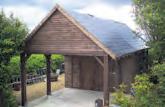
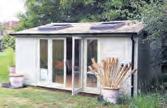
ADVERTISE HERE FROM JUST

Mark Hinsley takes a look at the changing views on how fungi, once believed to be a total problem for tree health can now play a role in the life of the tree, but there are a couple of problem fungi that must be dealt with
In the 1970s it was standard practice that if a fungal bracket appeared on a tree trunk the tree was immediately condemned as dangerous and felled.
In recent years our understanding of fungi and the key roles they play in the life of a tree has increased and evolved. We now recognise the importance of mycorrhizal fungi as an integral part of the function of a tree’s root system, the importance of some parasitic fungi in assisting the tree with canopy management and the removal of failing branches, and the need for butt decay fungi to allow the tree to recycle trunk wood which no longer has a vital role in the structural integrity of the tree.
We deal with tree risk management and the sight of a ganoderma bracket or fistulina on an oak, meripulus on beech, or laetiporus on yew does not have us calling up the operative with the big chainsaw. We have trees which have lived with these fungi to our knowledge for more than 20 years and are still going strong.
However, one size does not fit all, and there are a couple of guys on the block with whom one does not take liberties.
Inonotus hispidus (Shaggy Polypore). This fungus appears on broadleaf species including London plane, apple, walnut and elm, but it is on ash where you really have to sit up and take notice. It is not always an easy fungus to spot because the bracket usually appears high in the canopy of the tree; this is what is known as a ‘top rot’ fungus. Textbooks will give you nice close-up photos of the bracket; brown and white when young, almost black when old, but the reality is you are usually looking at a dark silhouette 20 ft above your head.
Inonotus weakens the wood of ash at an early stage of decay. Its presence on this species often indicates that breakage of the affected branch of trunk could be imminent (Lonsdale).
If you have Inonotus hispidus in your ash tree, get on to your tree surgeon. If you have a Tree Preservation Order
Editorial Publisher & Editor: Alan Lewis
alan@countrygardener.co.uk
Tel: 01823 431767
Time Off
Kate Lewis
editorial@countrygardener.co.uk
or are in a conservation area, inform your local council, but don’t hang about in doing so. Also – don’t try to use the timber – if infected timber is used for traditional ash products such as axe or hammer handles, it is inclined to shatter on impact.
Kretzschmaria deusta, formerly known as Ustulina deusta (Brittle Cinder Fungus). This one is sneaky. It is not a basidiomycete, which are the ones that produce nice big brackets for all to see It is an ascomycete, which are not that obvious at all. The fruiting bodies start out as flat grey patches with a white edge and then mature to areas of black crust which looks as if it has been scorched. The fruiting bodies are often located between the buttresses of the tree and can be hidden by vegetation around the base. It attacks several broadleaf species but is most found on lime and beech.
It rapidly makes the trunk wood brittle and liable to shatter and collapse. Because of its brittleness it is often not detected by ultra-sound or resistance drill methods of tree assessment. Of the two species it tends to attack it seems to cause most failures in beech.
If other more obvious fungi are also present, they probably get the blame and the kretzschmaria, the real cause, goes undetected.
However Identification can be tricky – there are some lichens that can look similar, but once you know you have it, the tree must be felled.
Mark Hinsley, of Mark Hinsley
Arboricultural Consultants Ltd, offering tree consultancy services. www.treeadvice.info
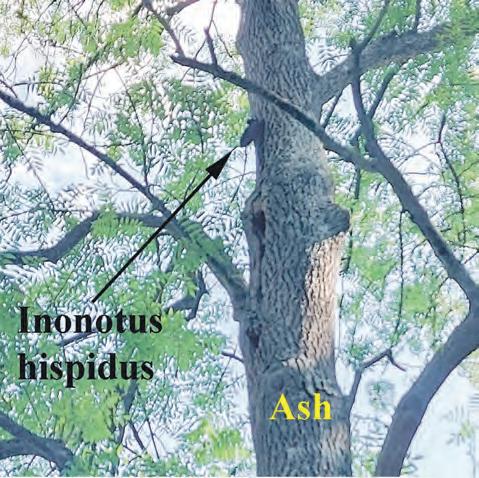

Advertising Sales
Ava Bench - Somerset & Hampshire
ava@countrygardener.co.uk
Tel: 01278 786139
Corina Reay - Cotswolds, Devon & Dorset
corina@countrygardener.co.uk
Tel: 01823 410098
Classifieds classified@countrygardener.co.uk
Accounts and subscriptions
Heather Rose heather@countrygardener.co.uk
Design & Production
Aidan Gill
aidan@countrygardener.co.uk
Gemma Stringer gemma@countrygardener.co.uk
Distribution & Stockists distribution@countrygardener.co.uk





